Well-designed windows often make the difference in making an apartment or house feel complete. Sometimes, simply changing the drapes can transform the interior. While people choose finishes and furniture with care, they usually don’t demand much from curtains and often go for the classic style—straight panels that slide sideways. Meanwhile, the variety of curtain styles is so vast that it definitely pays to spend some time exploring them to find the perfect fit for your home.
Sliding
These drapes hang from a freely mounted rod and can move sideways. This classic style suits any room: living rooms, bedrooms, children’s rooms, and even kitchens. Many people think they know everything about these curtains: the types available, their differences, and where they best fit. However, this group is not limited to the familiar designs: there are also Japanese panels, string curtains, café styles, and others.
Classic
Timeless classics consist of one, two, or more rectangular panels that are either floor-length or shortened (covering the windowsills).
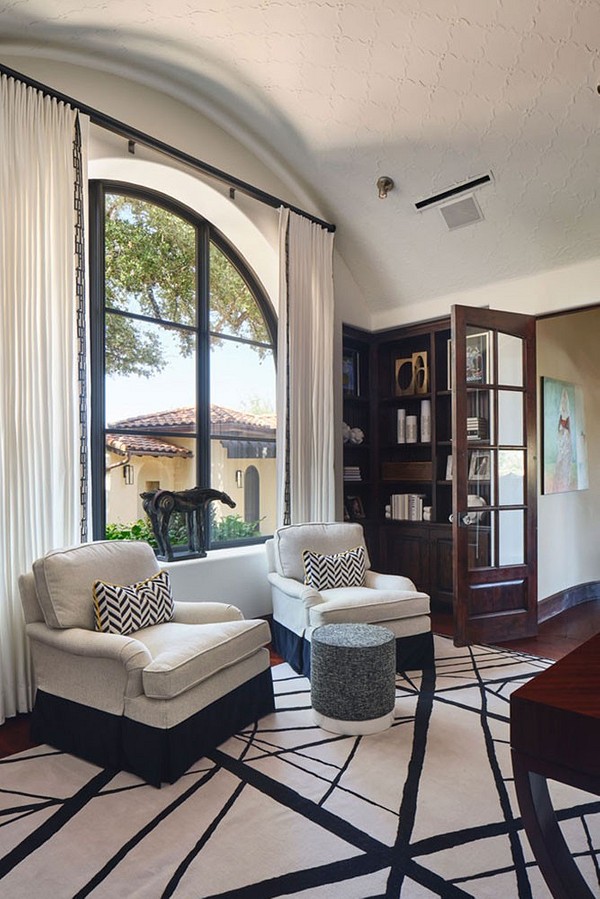
Typically, they are 1.5-2 times wider than the window opening, so even when closed they create soft vertical waves. Depending on the color and material, these curtains can play various roles. Richly colored damask beautifies a guest room, opaque dark ones create suitable conditions for sleep in a bedroom, and thin patterned ones complement a child’s room or fit seamlessly into a kitchen setting.
Curtains easily mix with each other (when dense, heavy fabric complements light sheer curtains) and with other types of curtains (such as roller or Roman shades).

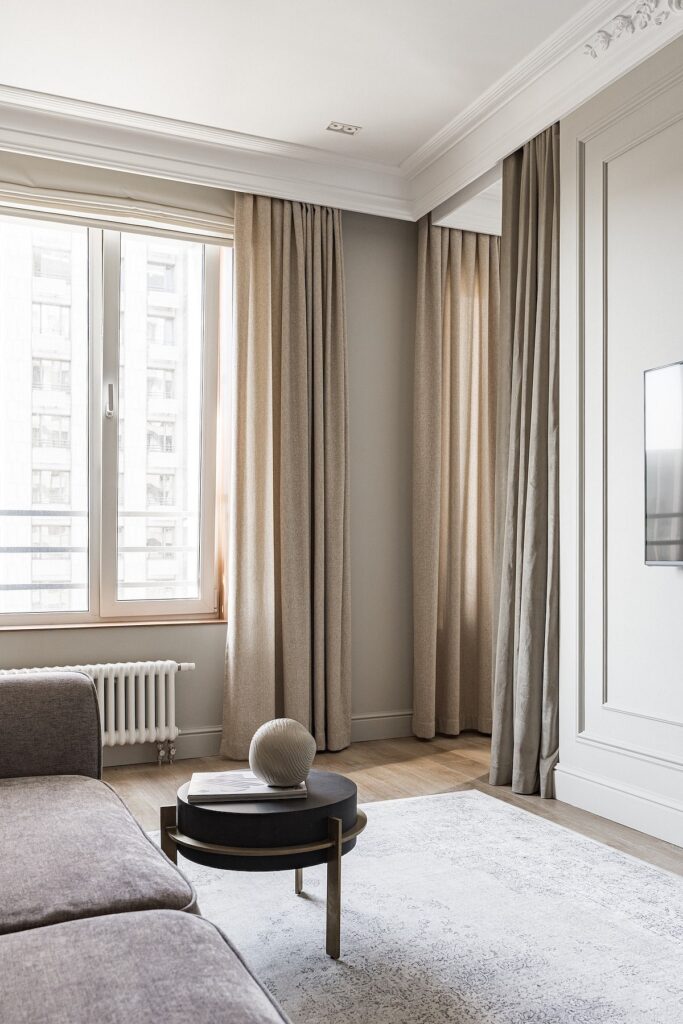
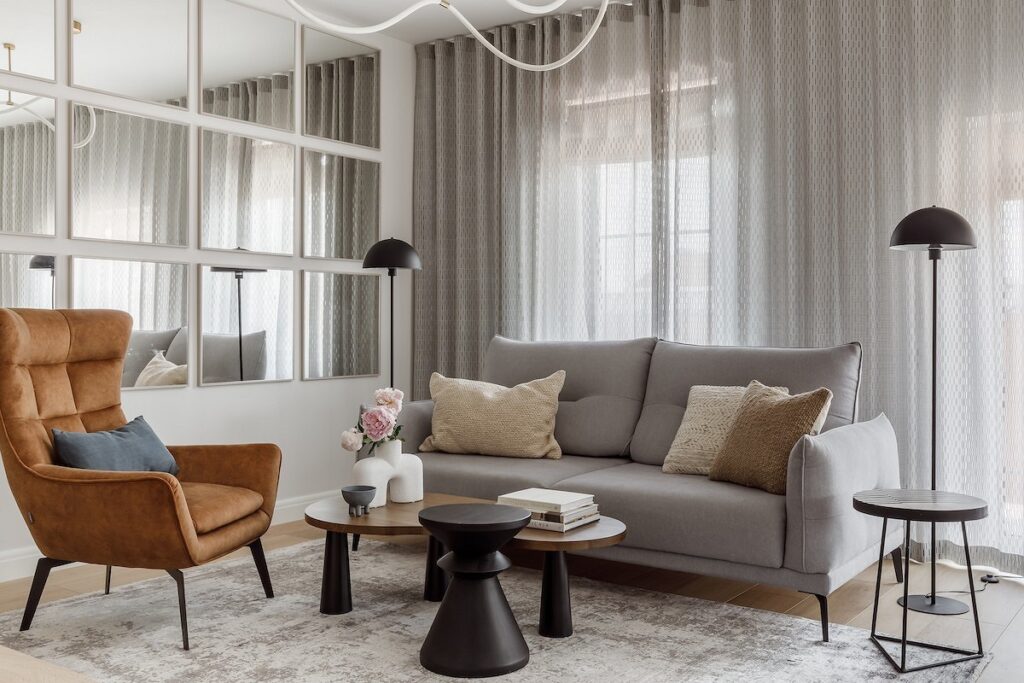

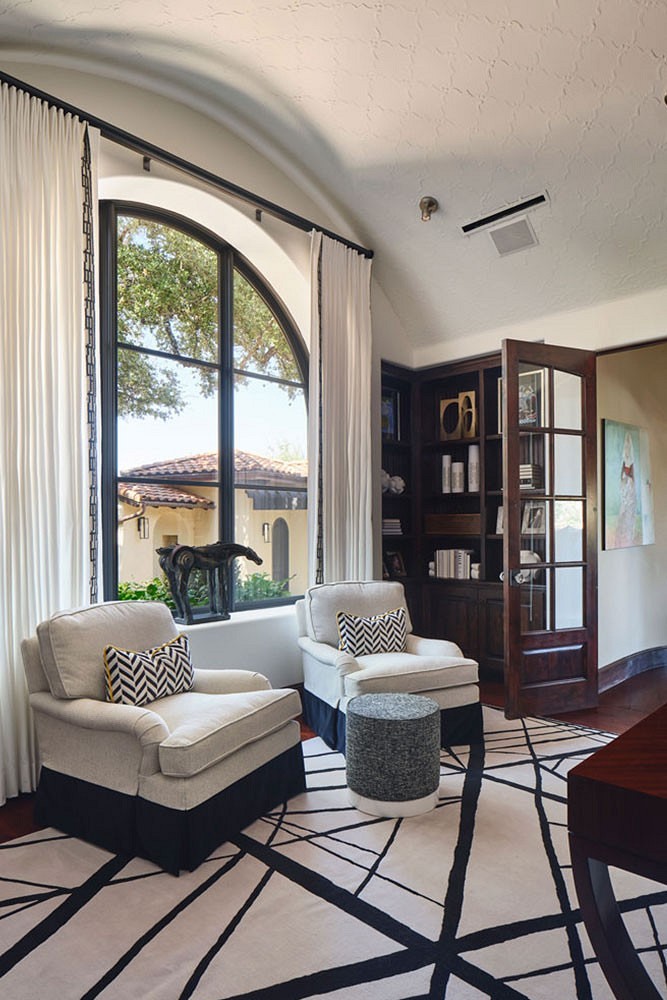
Crossed
These differ from the previous ones in that the panels are mounted on the rod not side by side, but overlapping each other.
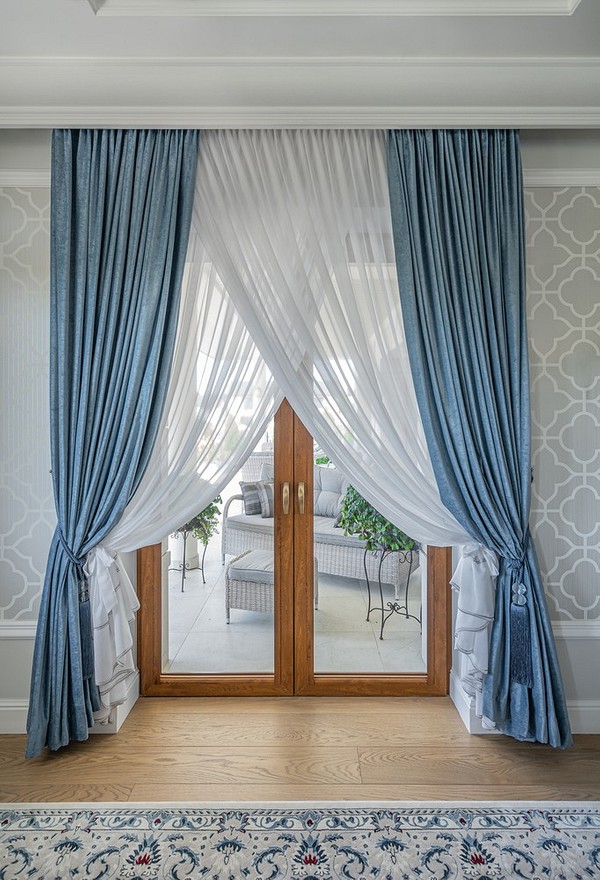
The lower parts are spread to the sides and secured at the edges of the window with tiebacks. These curtains use light, semi-transparent material that casts a soft shadow in the room, protecting from the blazing sun. Hence, they are suitable for any room, primarily as a complement to denser and heavier drapes. What does this curtain style bring to the interior? E
legance, frivolity, and a French touch, appropriate for homes in classic, Provence, shabby chic, Empire styles, and more.
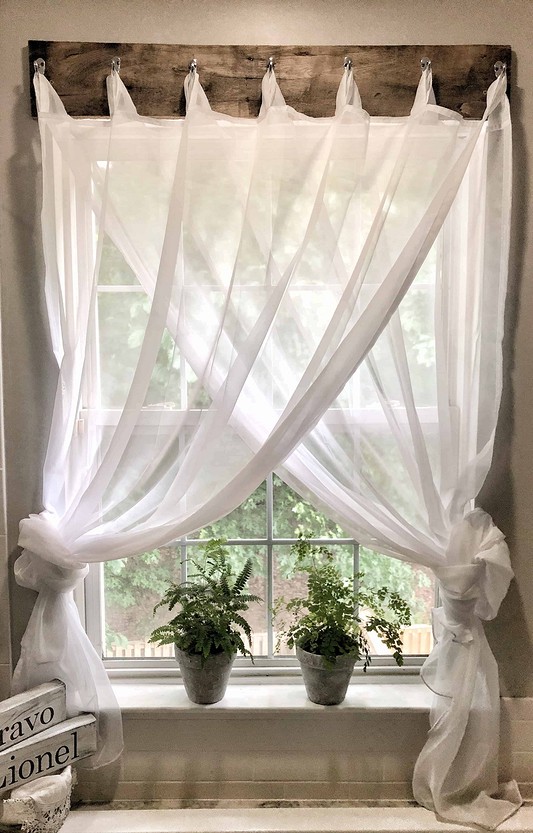
With Valances
A valance is a piece of fabric in an elegant shape that mounts on the rod, completely covering it. It can complement the drapes or be used on its own.
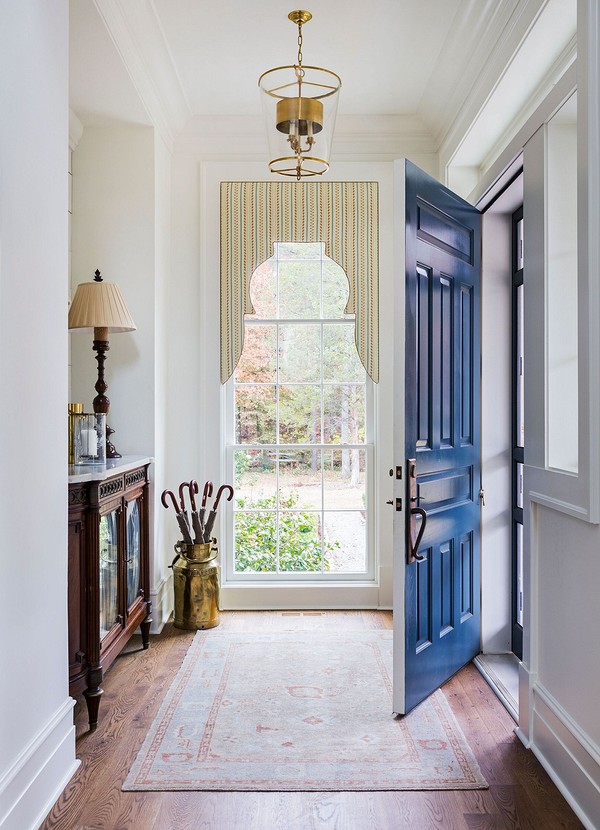
For example, it softens the utilitarian look of Roman shades and completes the appearance of classic curtains. These decorative elements are made from the same fabric as the main curtains. Their shapes can be semicircular with soft horizontal folds, slanted (hung at the edges), or pointed (positioned at the center of the window) and more.
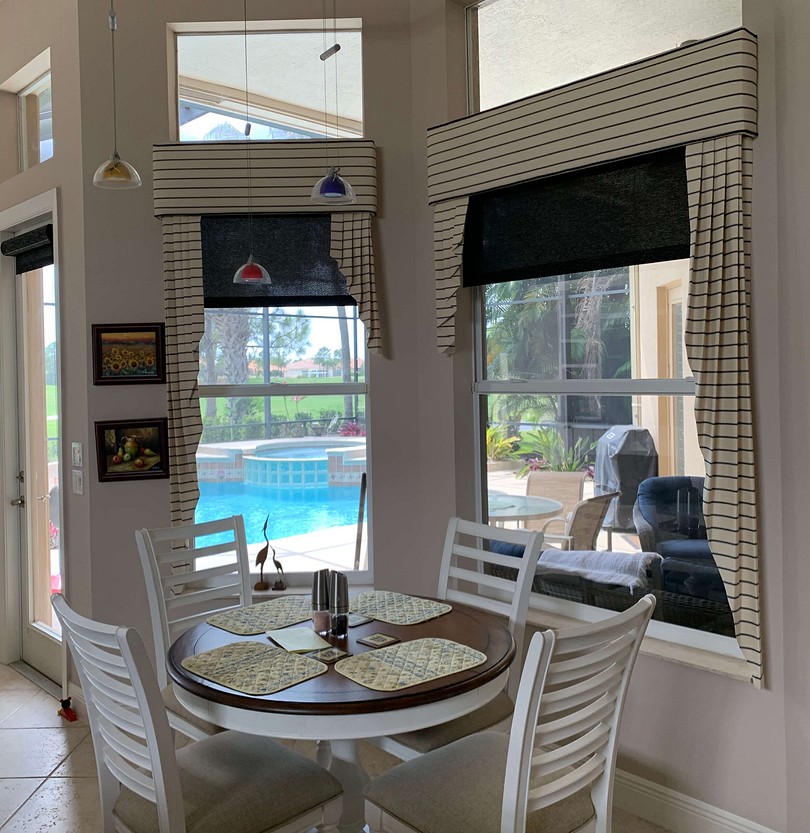
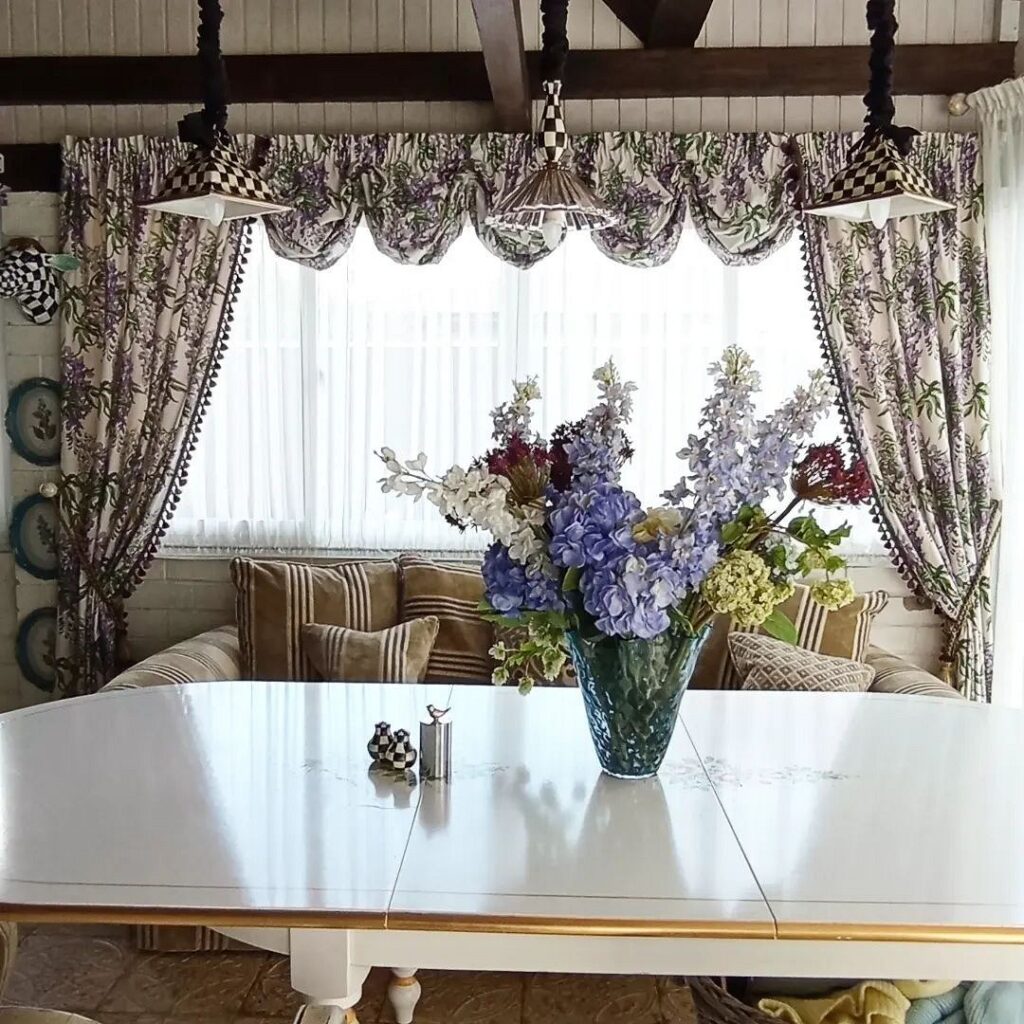
Café Curtains
This type of mini-curtains used to be commonly seen in cafés and trains.
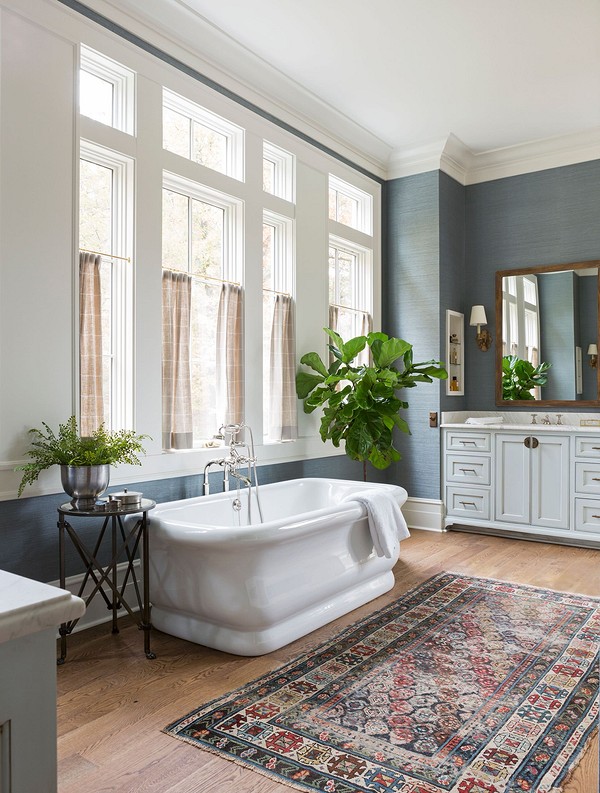
They come in two main versions: a fabric panel is fixed directly on two rods—at the top and bottom of the window, or a rod is placed in the middle of the window opening, where a shortened curtain is fixed. As the name suggests, these curtains are best hung in kitchens or dining areas. They also find a place in bathrooms, on enclosed porches, or in the hallways of private homes. However, they are not suitable for bedrooms, children’s rooms, or living rooms, as they do not sufficiently darken the space.
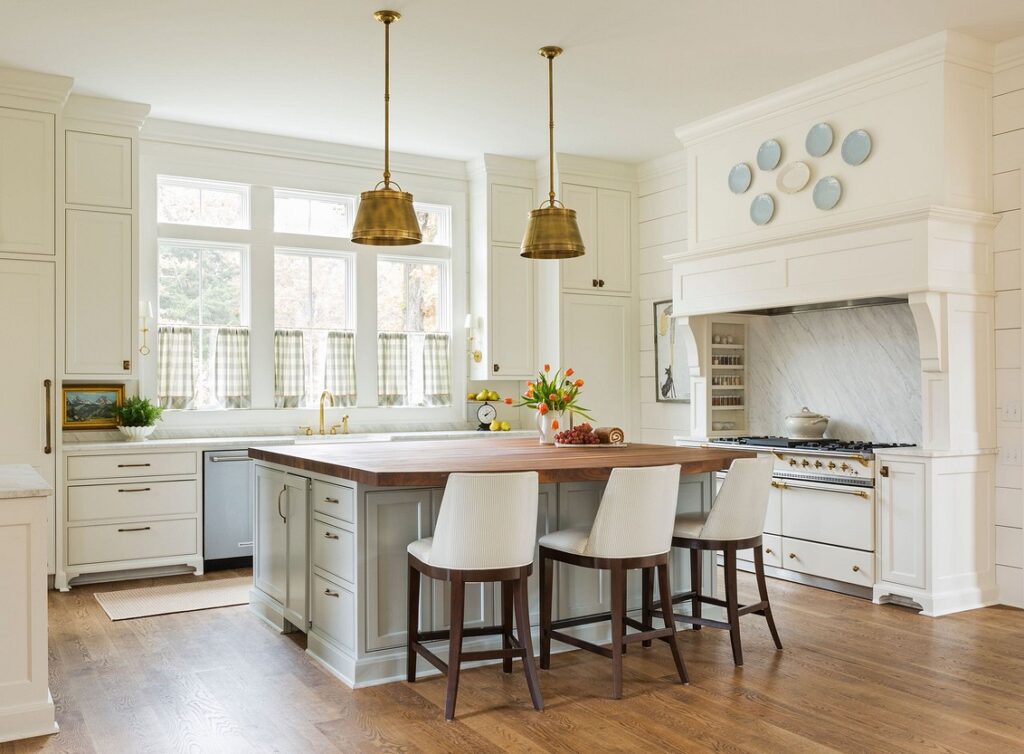
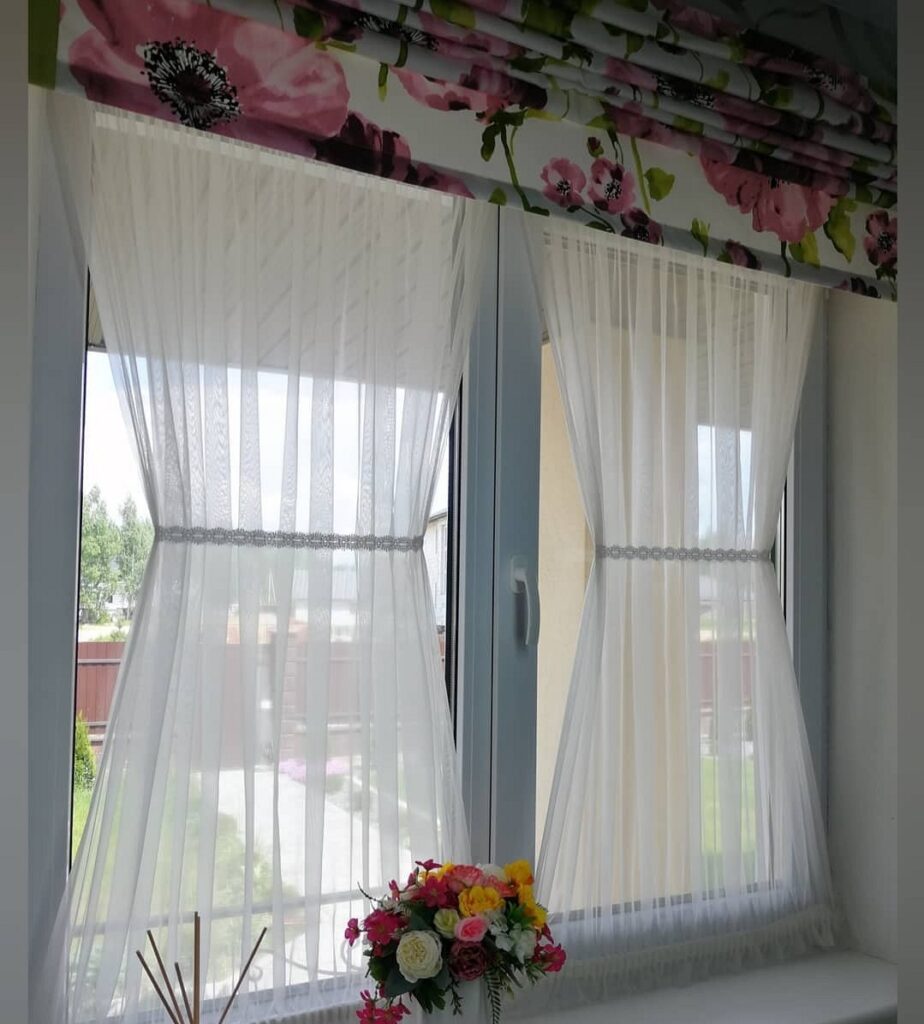
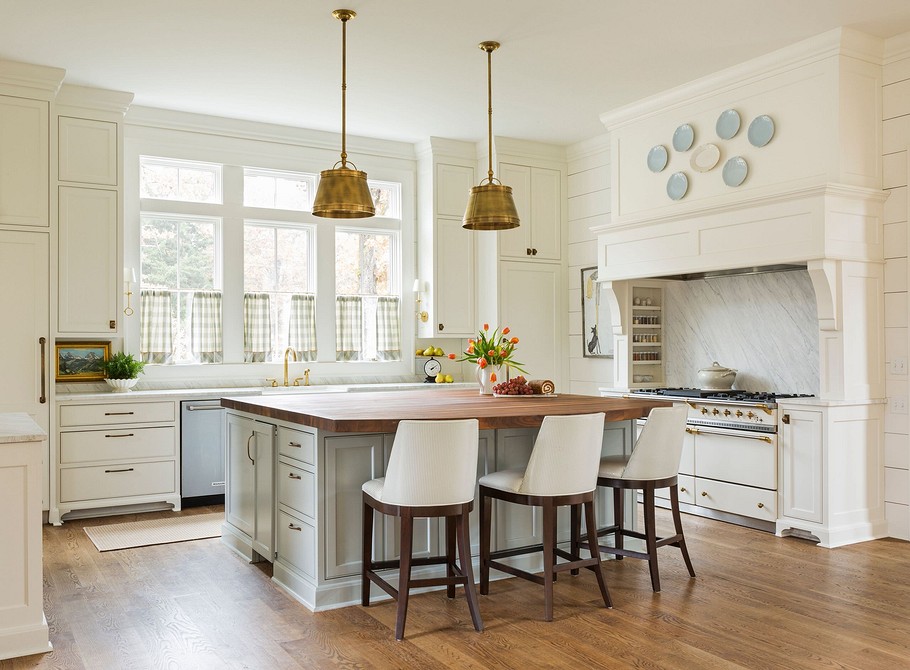
Japanese Panels
Among the most demanding in terms of interior compatibility.
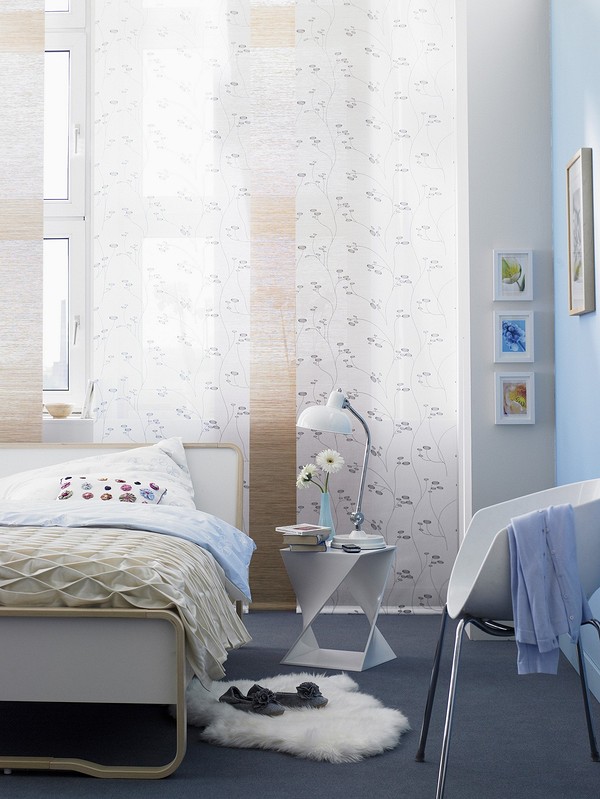
They tolerate no mistakes or missteps: everything in the room must match their strict and succinct appearance. They consist of straight fabric panels stretched over rectangular frames, which slide sideways along tracks mounted on the ceiling (and sometimes on the floor). Functionally similar to screens in Japanese homes, hence their name. For this reason, the material is usually thin, semi-transparent, and almost always light, resembling rice paper.
These curtains are often seen in office spaces and executives’ offices. In residential homes, they are installed on terraces, in bedrooms, and living rooms. They look particularly stunning with panoramic windows.
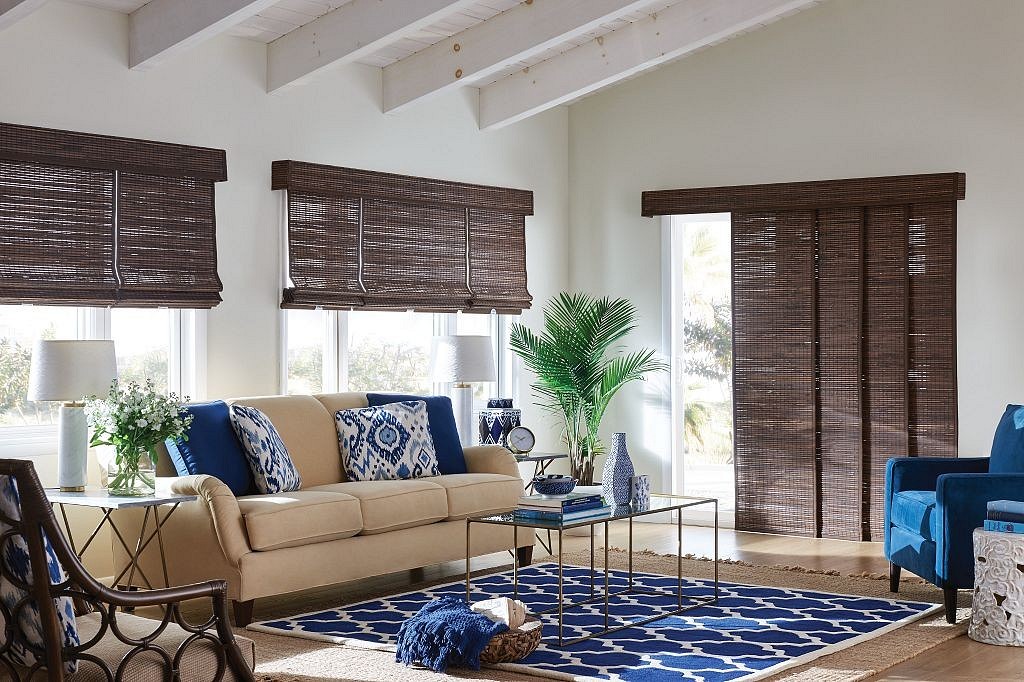
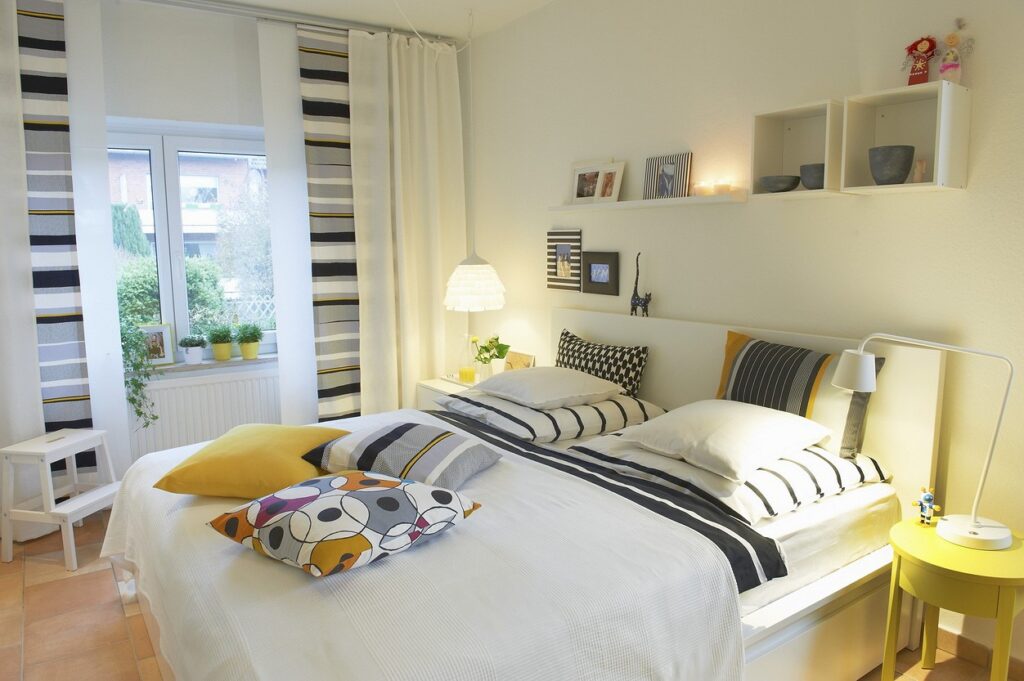
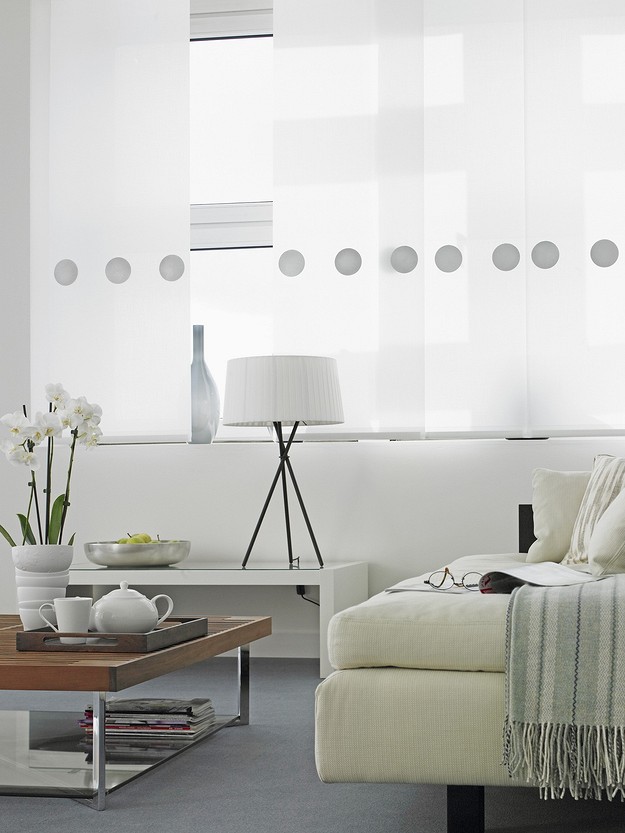
String
String curtains with beads were once very popular, but today they are suitable, as a rule, only in styles like boho-chic, glam, and a few others, and even there, they must be used with great caution.
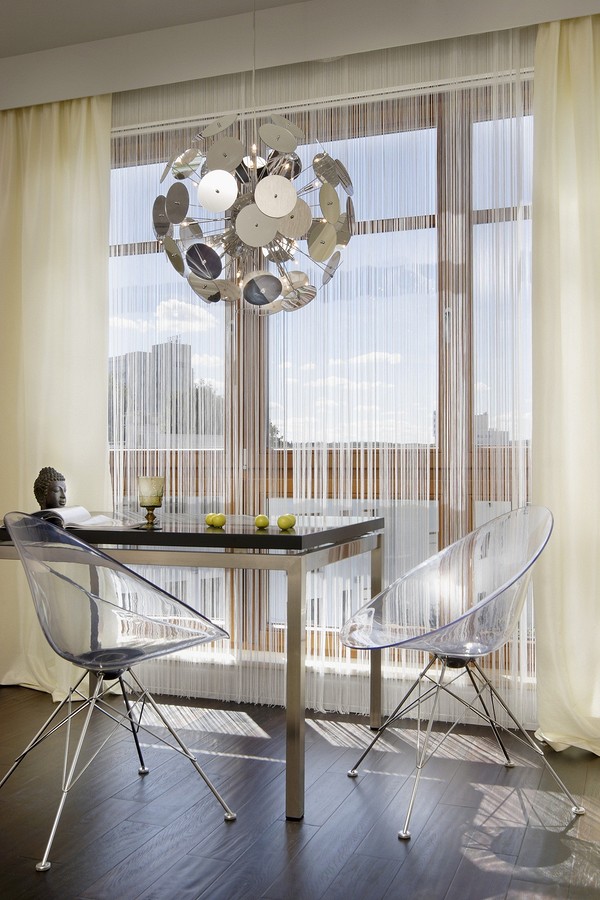
They can be hung not only on windows but also in doorways or even to divide a space. A modern variant is the kiseya: long bunches of synthetic threads or thin ribbons are attached to a tape, which almost never tangles and retains its aesthetic look over time. Strings made of thin metal chains look original and unconventional.
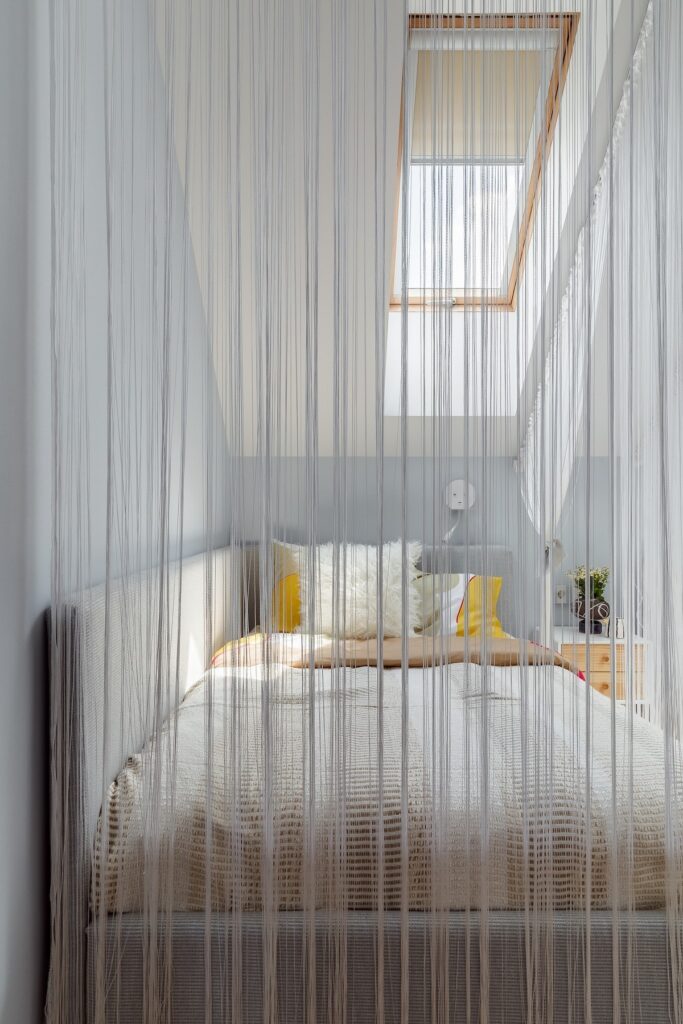
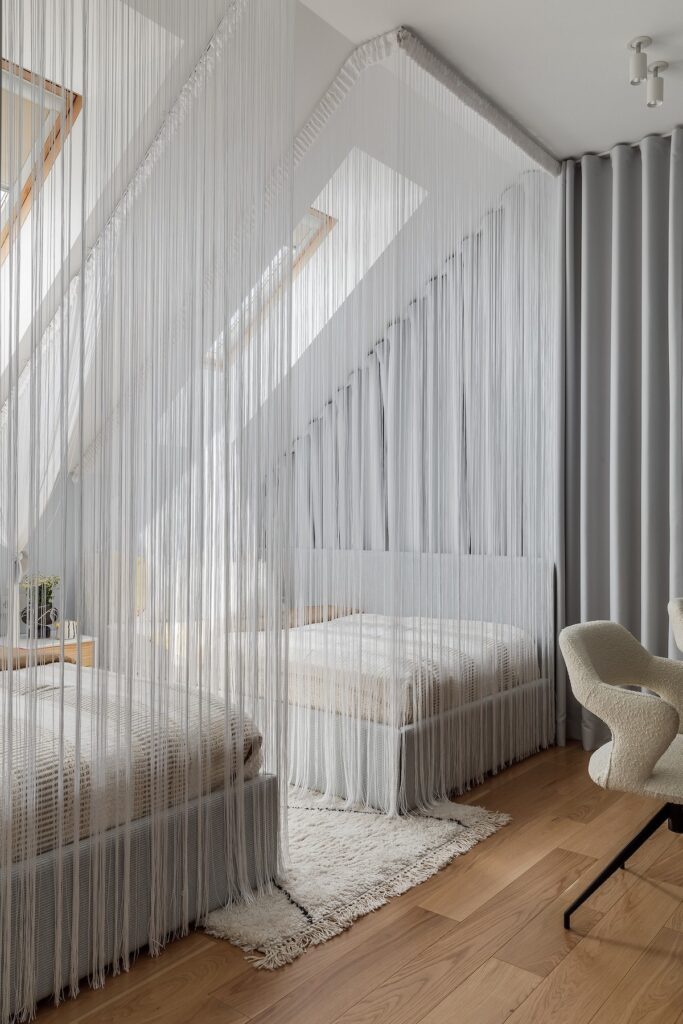
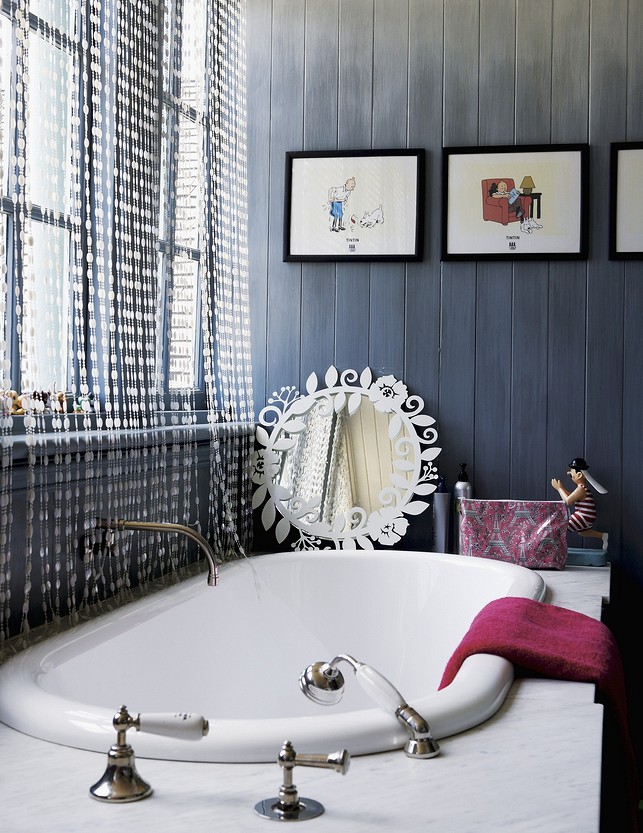
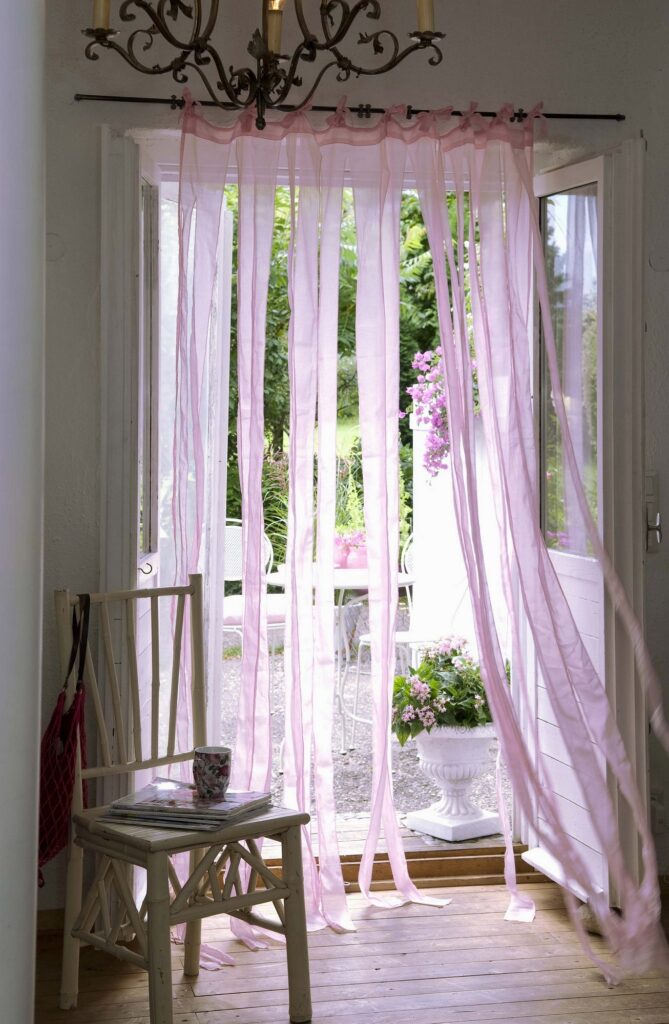
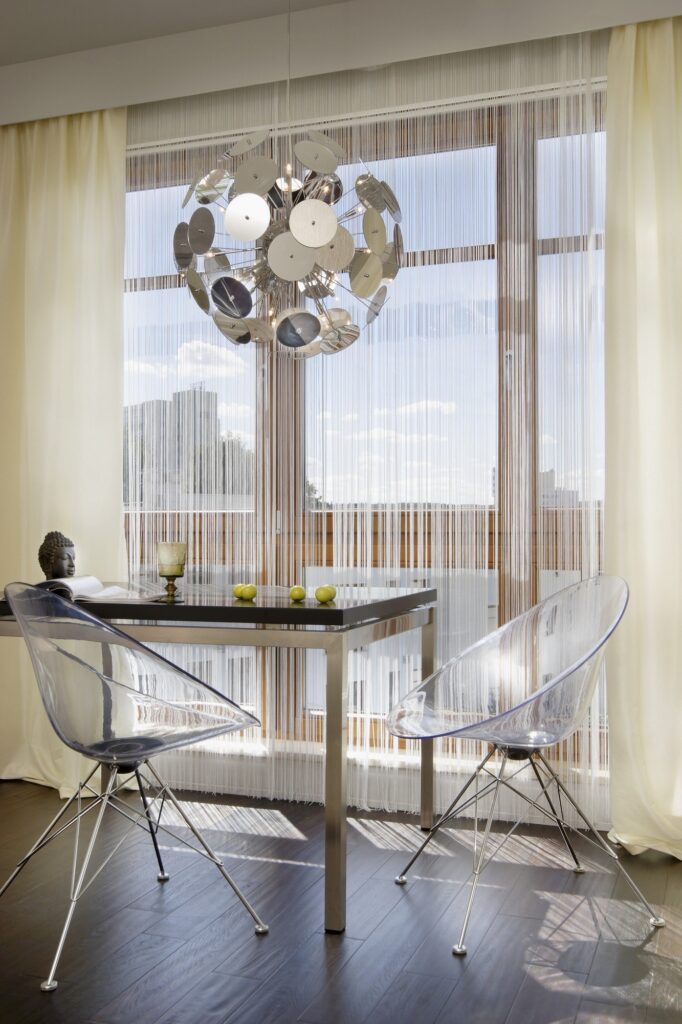
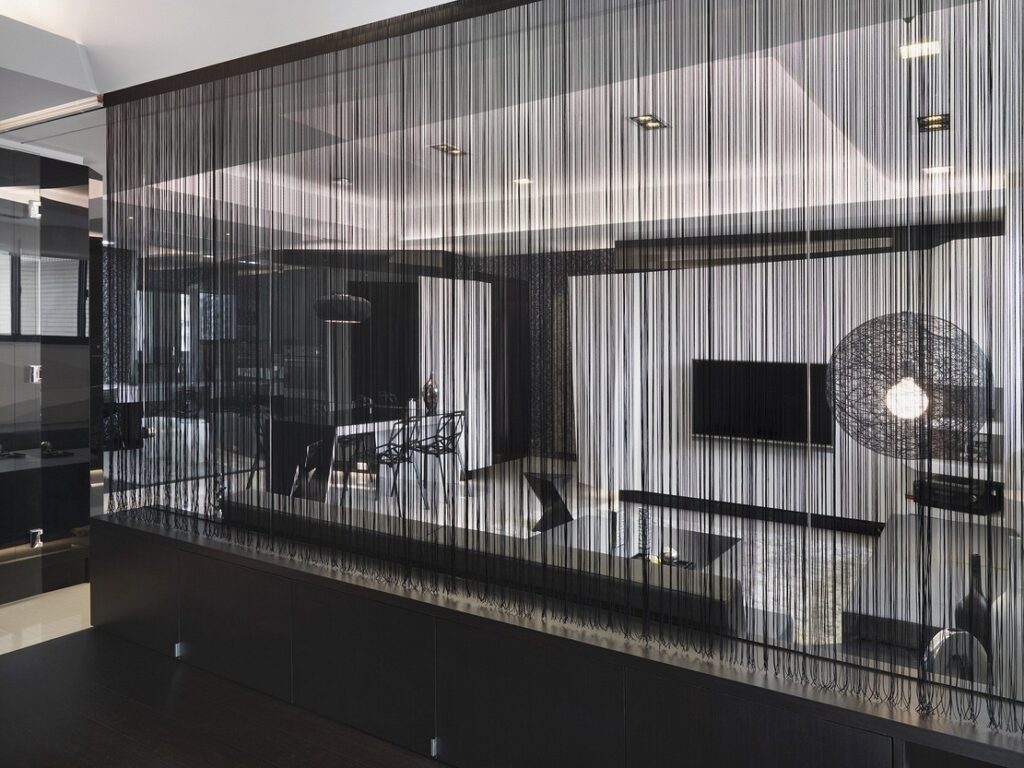
Photo Curtains
A simple, though controversial, way to introduce something unique to the decor that no one else has.

You can transfer almost any image onto fabric—from abstract art to a photograph of your favorite cat. With such curtains, the interior becomes personalized. Choose the image very carefully, and it’s better to involve a designer, as not every image looks appropriate on curtains, especially when they are drawn to the sides during the day.
A good idea is to hang such panels in a child’s room with pictures of favorite cartoon or fairy tale characters. In other rooms, more neutral photo themes are appropriate, helping to create the right atmosphere: floral motifs for a young couple’s bedroom, geometric patterns for a home office, landscapes, and cityscapes for a living room. Printing only on the upper half of the curtains can make them look more organic.

Lift-Up
Curtains in this group don’t slide; they lift up. This is convenient in spaces where there’s little room: such curtains don’t occupy space on the sides of the window. Moreover, their adjustment is quick and simple, allowing you to raise or lower the panel with one hand, so these models are often used in kitchens and children’s rooms, where functionality and ease of use are paramount.
With Drapery
These include Austrian, English (London), and French curtains.
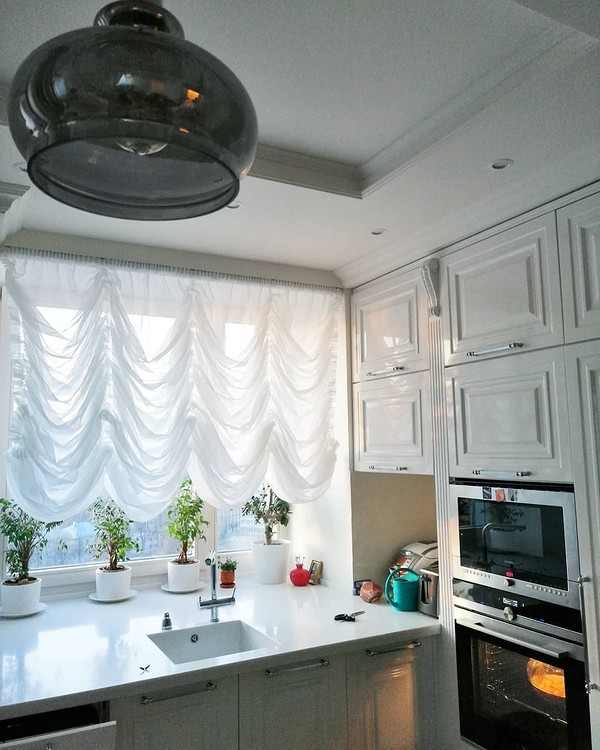
Their working principle is the same: vertical cords (two or more) are inserted into a rectangular panel at distances from each other. The fabric slides along the cords upwards, forming soft horizontal waves.
What differentiates these types of curtains? The placement of folds. When the curtain is fully lowered, the French type has folds along its entire length, the Austrian at the bottom part only, and the English type has none at all. Additionally, the French version is usually made from thin and light fabrics without patterns, the Austrian from semi-transparent material with or without a print, and English curtains—the densest and heaviest, almost always decorated with ornaments, checks, stripes, or other patterns.
Such window treatments harmonize with classicism, as well as Empire and Baroque styles, which are now rarely encountered.
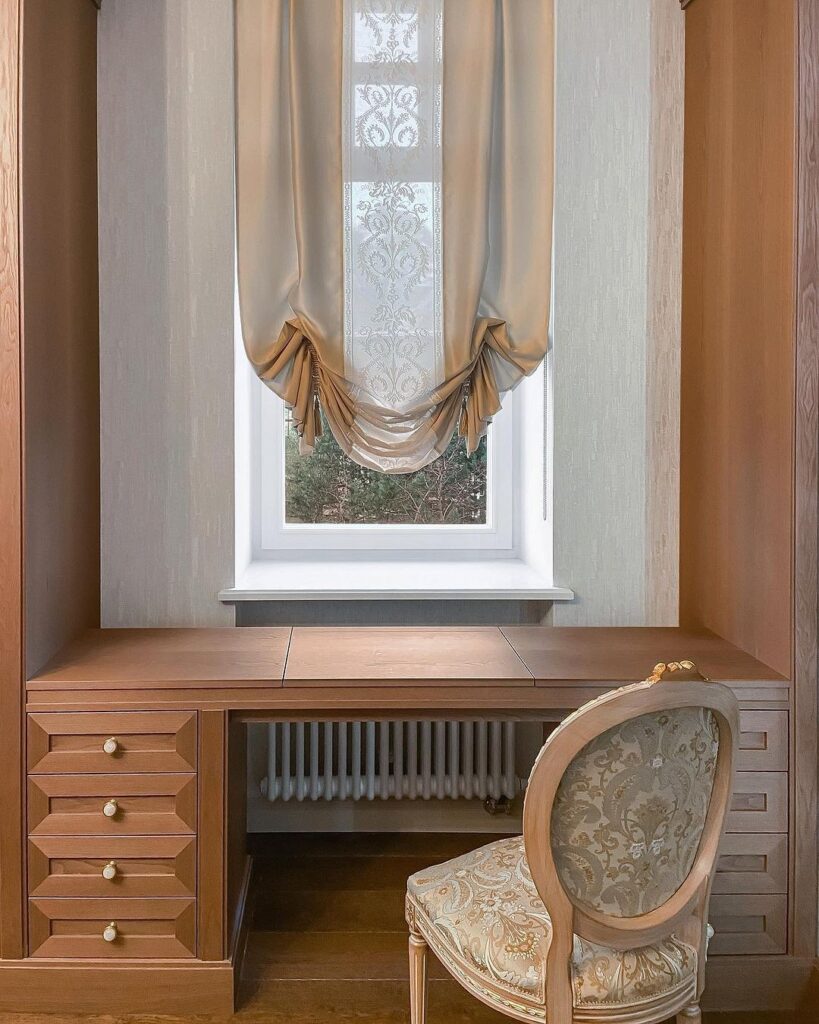
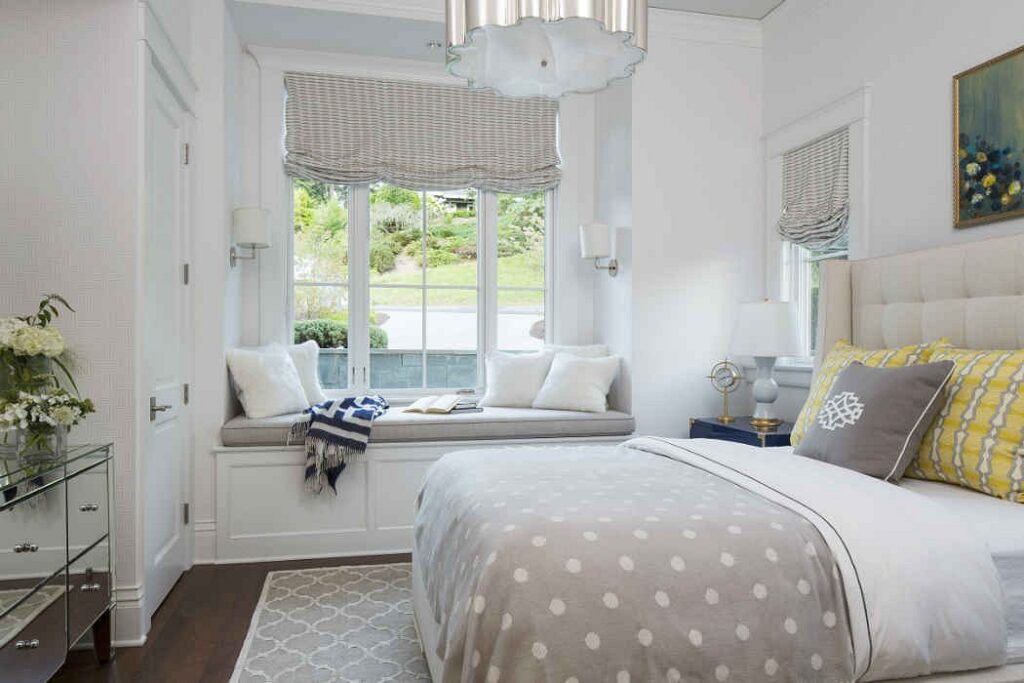
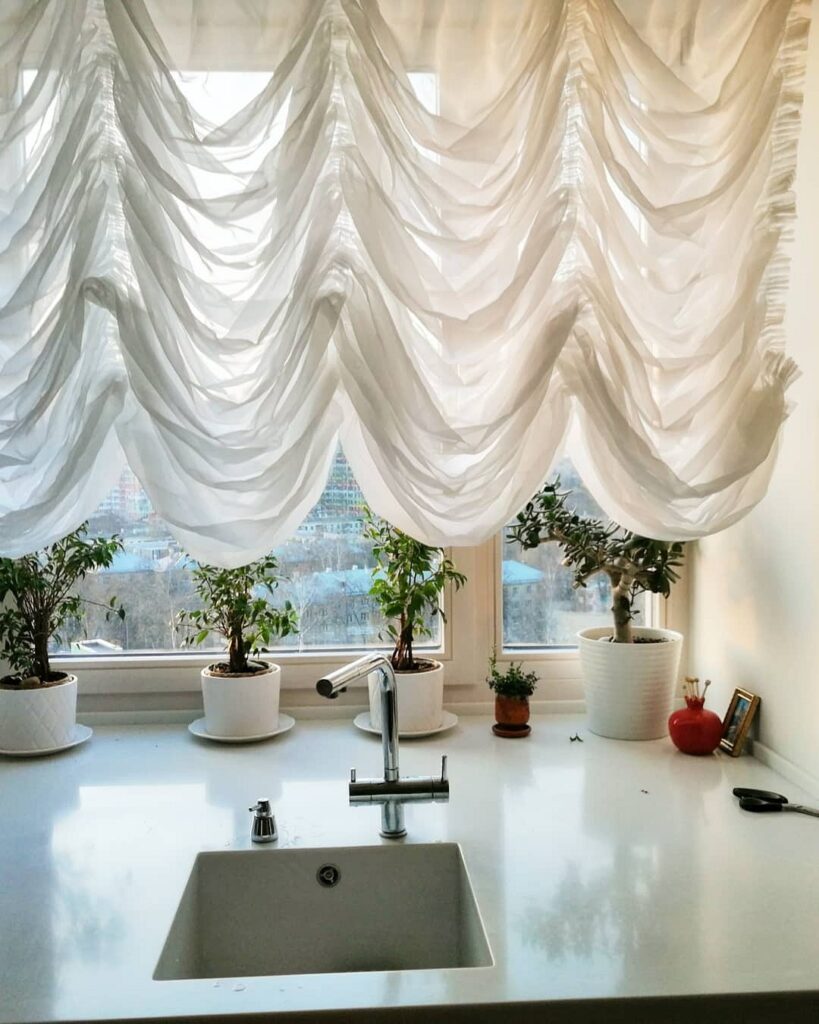
Roman
The simplicity, functionality, and aesthetic appeal of all types of Roman shades have made them undeniable favorites among both designers and their clients.
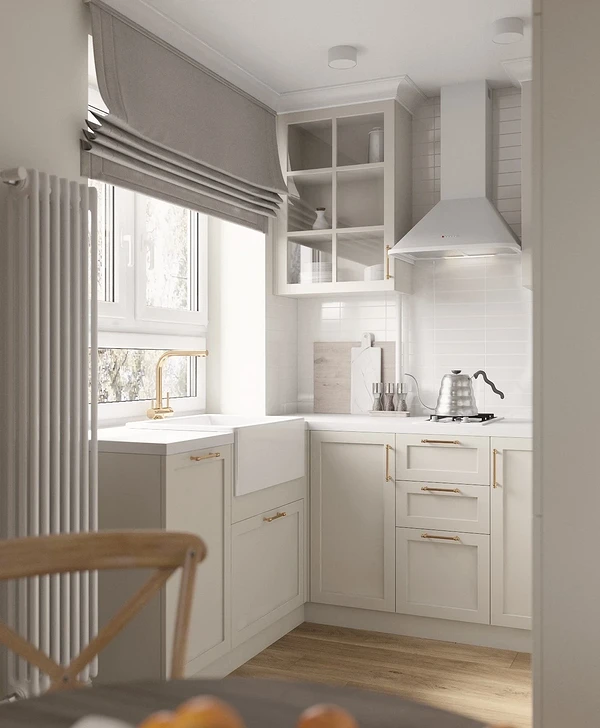
In a rectangular piece of dense fabric, horizontal stiffening ribs are evenly installed. When you pull the cord, the material rises, forming even, uniform folds. This window treatment is versatile: it looks great in the kitchen, children’s room, and home office. In a minimalist living room, such draperies give a polished look, and in the bedroom, they shield you from bright sunlight and neighbors’ gazes. You can combine them with standard sliding curtains. This duo is not only stylish but also practical: Roman shades provide isolation from the outside world when needed, while classic curtains soften their utilitarian nature and decorate the space.

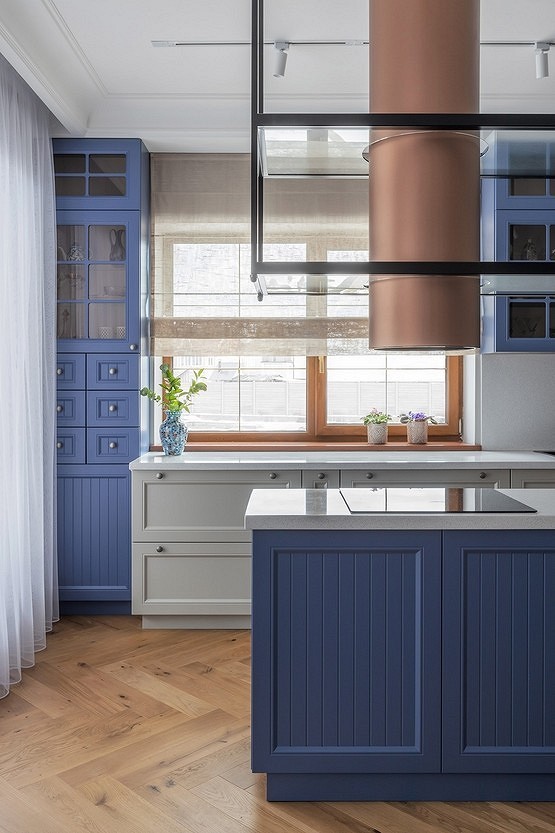
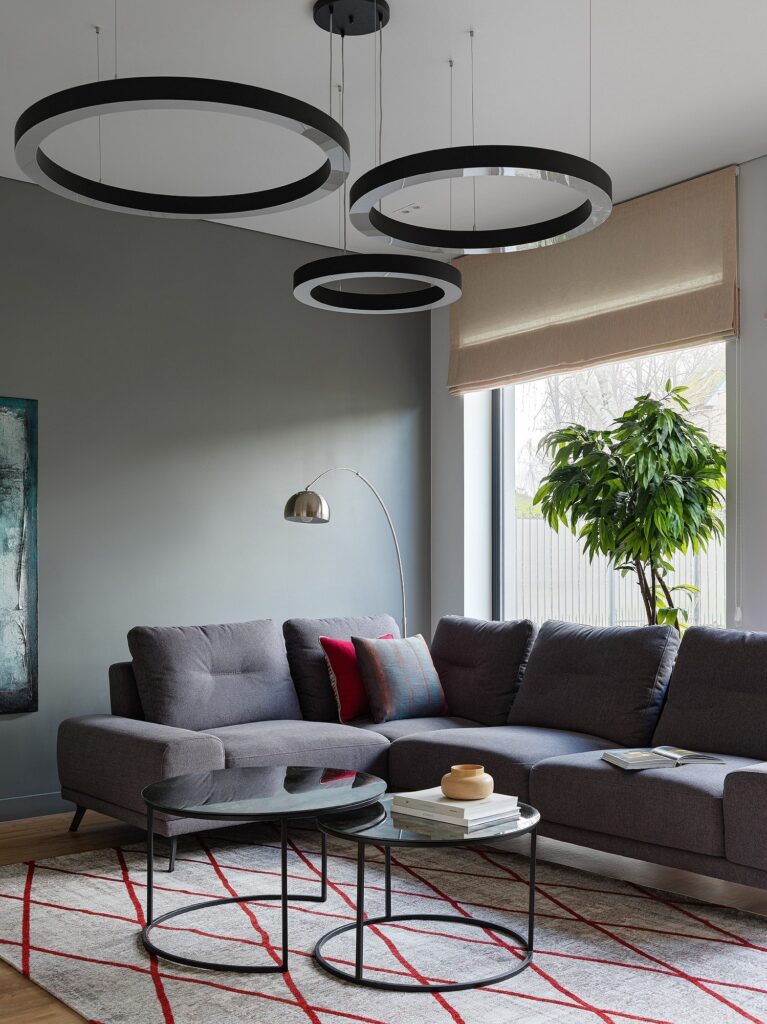
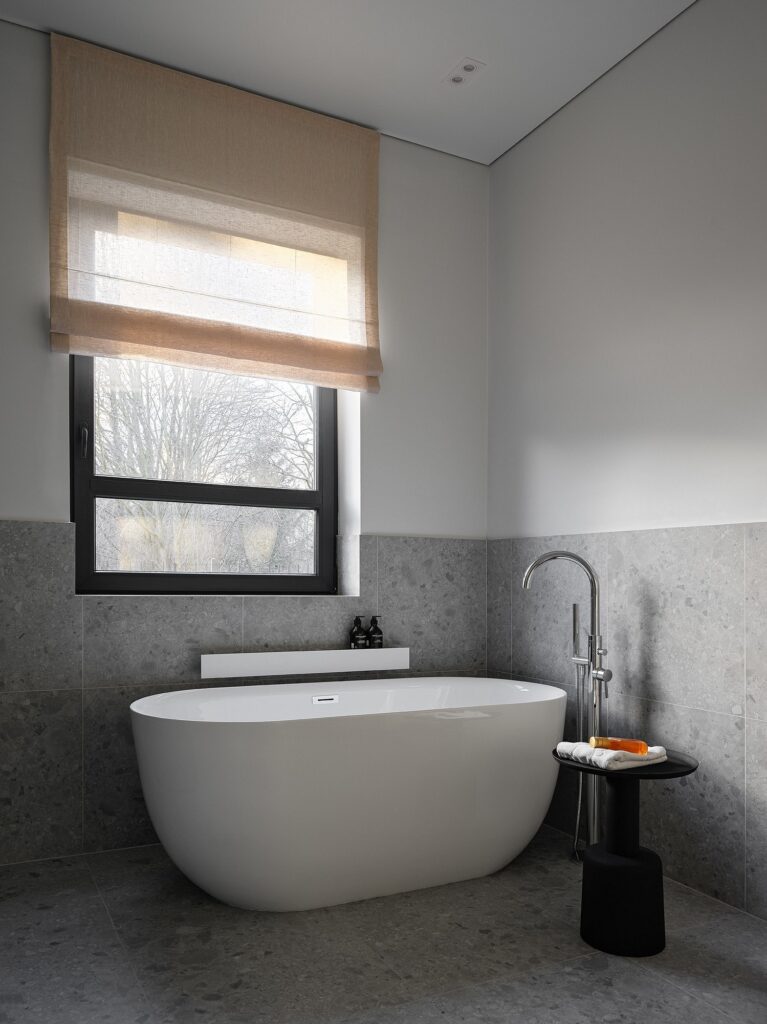
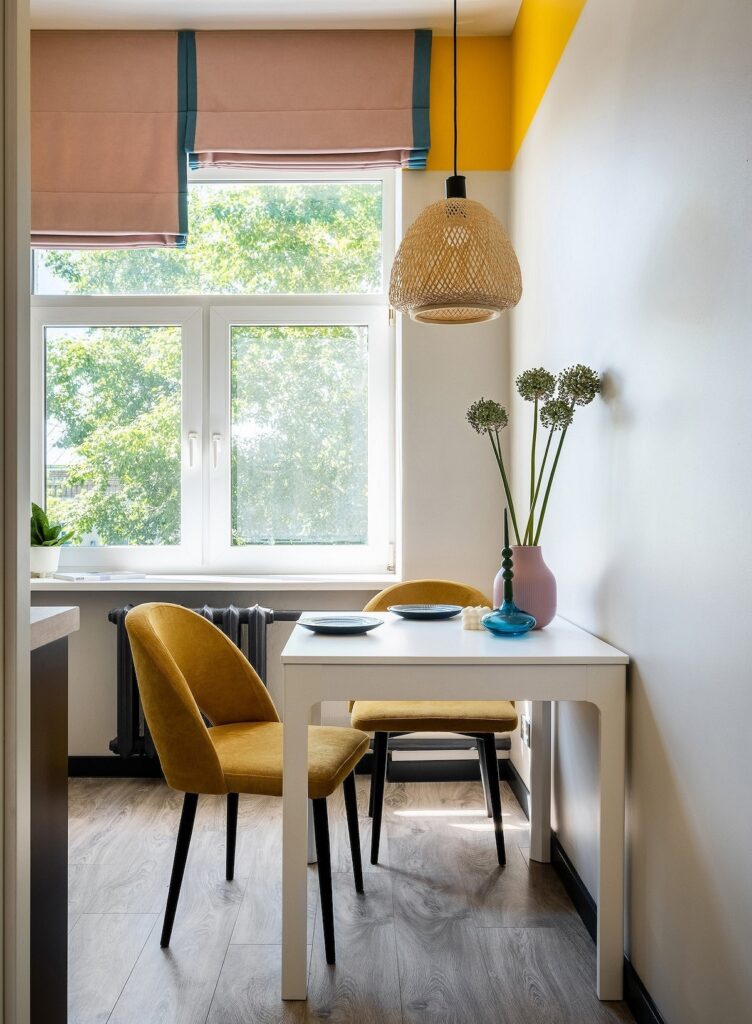

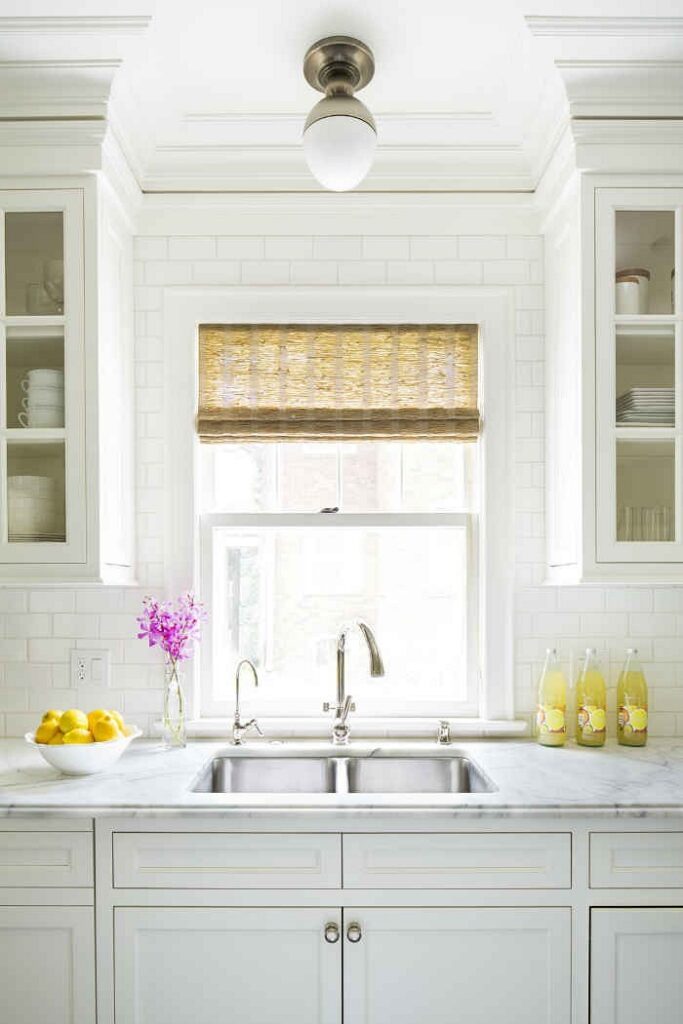
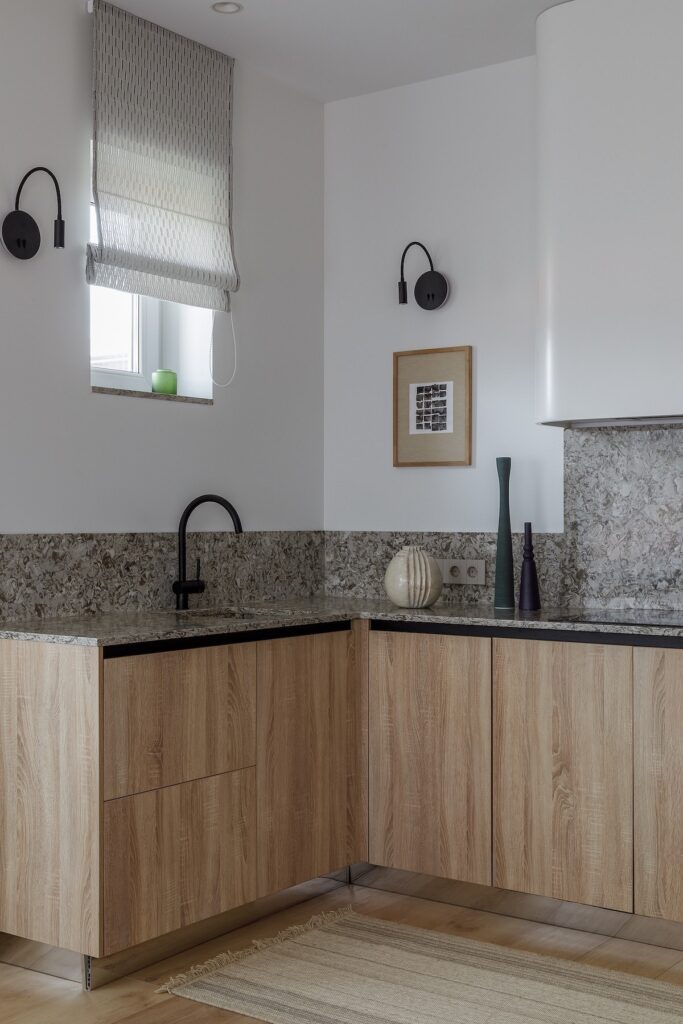
Roller
Curtains in this category roll up into a tube.
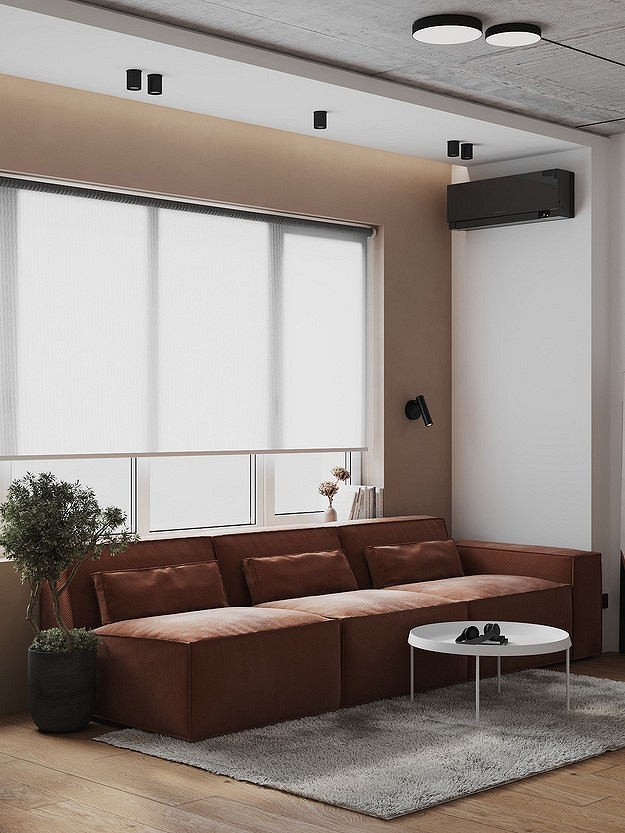
There are standard types of roller shades: traditional, mini, UNI system, and “day-night.”
Traditional roller shades are equipped with a bottom bar that smooths them out, with the fabric not fixed on the sides.
Mini shades attach directly to window sashes, which is convenient if you have wide windows: you can adjust the light penetration for each one separately.
UNI is a system where the rolled fabric hides in a box, and when extended, it moves along guides installed along the window reveals.
“Day-night” is an option for those who want precise light control, typically for bedrooms, bathrooms, or studios. These draperies are made of two layers of fabric with alternating bands of sheer light fabric and dense opaque material. When you pull the cord, the fabric shifts, and the gap between the dark opaque sections either increases or decreases.
Bamboo roller shades stand alone. They are made from thin wooden rods or slats and roll up in the same way. They are often purchased for apartments in eco- and ethnic styles.
All these solutions are more practical than beautiful, so they are suitable where convenience is paramount: in the kitchen, bathroom, utility rooms on a country site. They are often chosen for children’s rooms as they are easy to adjust even by a child. Moreover, it’s impossible to get tangled in them like in long draperies or string curtains. In living rooms and dining rooms, it’s better to combine them with other types of curtains.
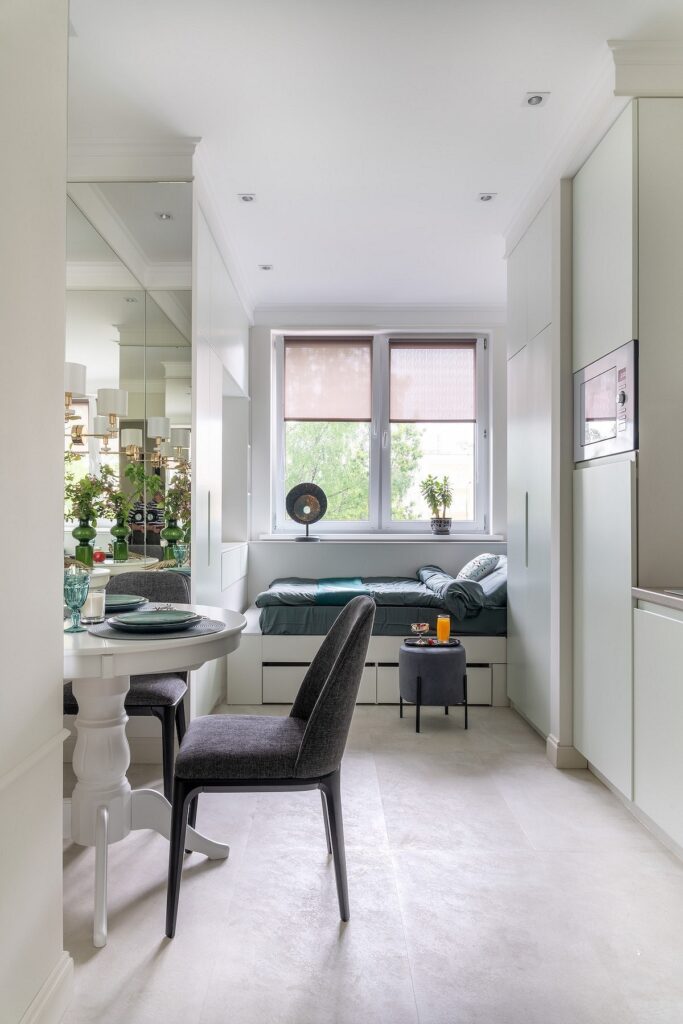
Pleated
This type of curtain can be called a stylish alternative to blinds.
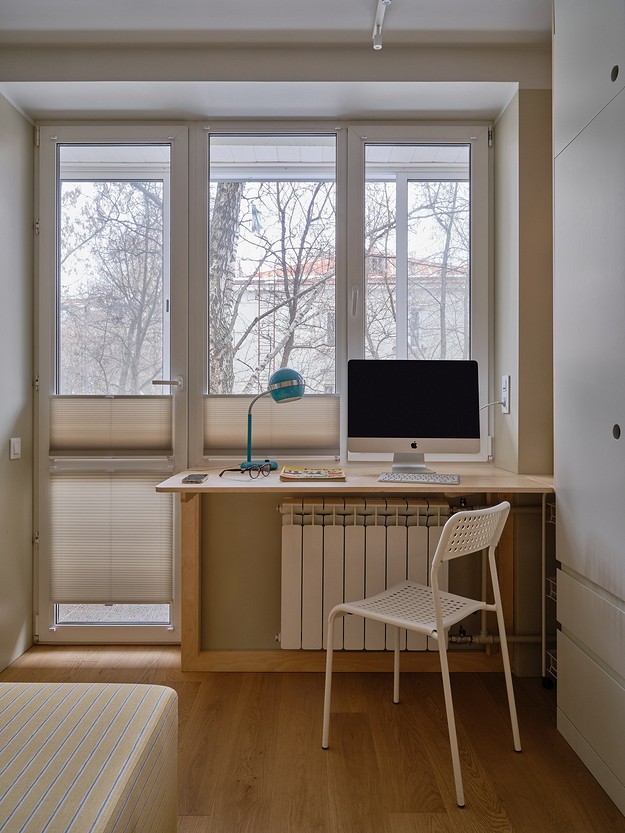
If you like everything about blinds except their plain appearance, you’ll probably like pleated shades. They are made from stiff fabric that holds its shape well. When raised, they fold into a neat accordion; when lowered, the folds sag under their own weight, slightly evening out, but the fabric never becomes completely smooth: it always retains triangular waves.
These types of curtains are great for plastic windows installed at an angle or those that are often left open in a tilted position: pleated shades can be fixed not only at the top of the frame but also at the bottom, and guides can be added on the sides to ensure the fabric never sags.
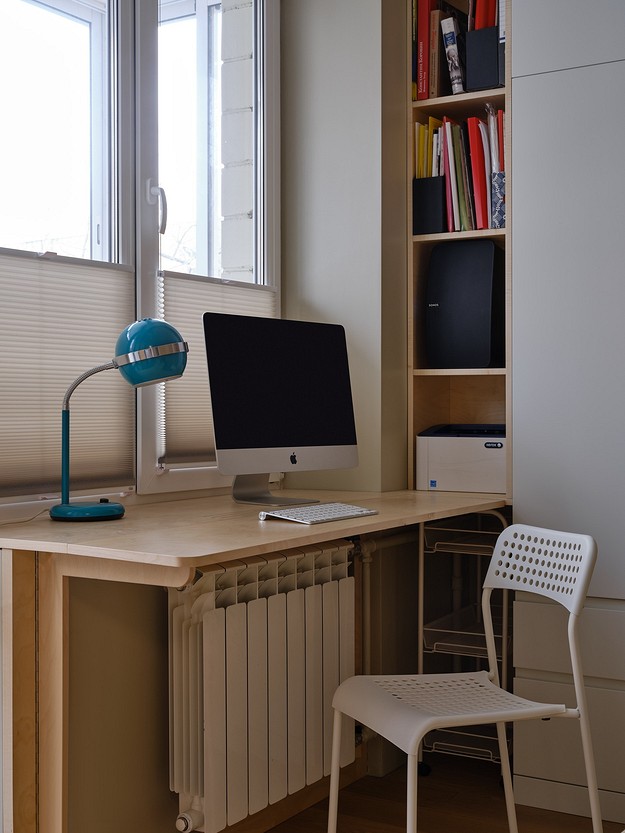
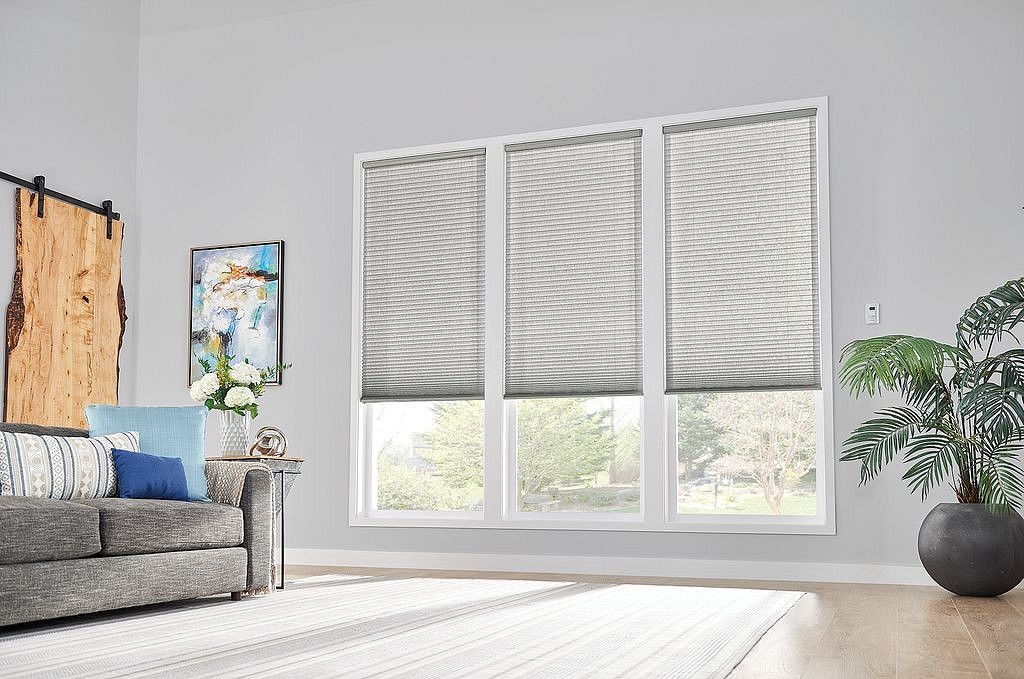
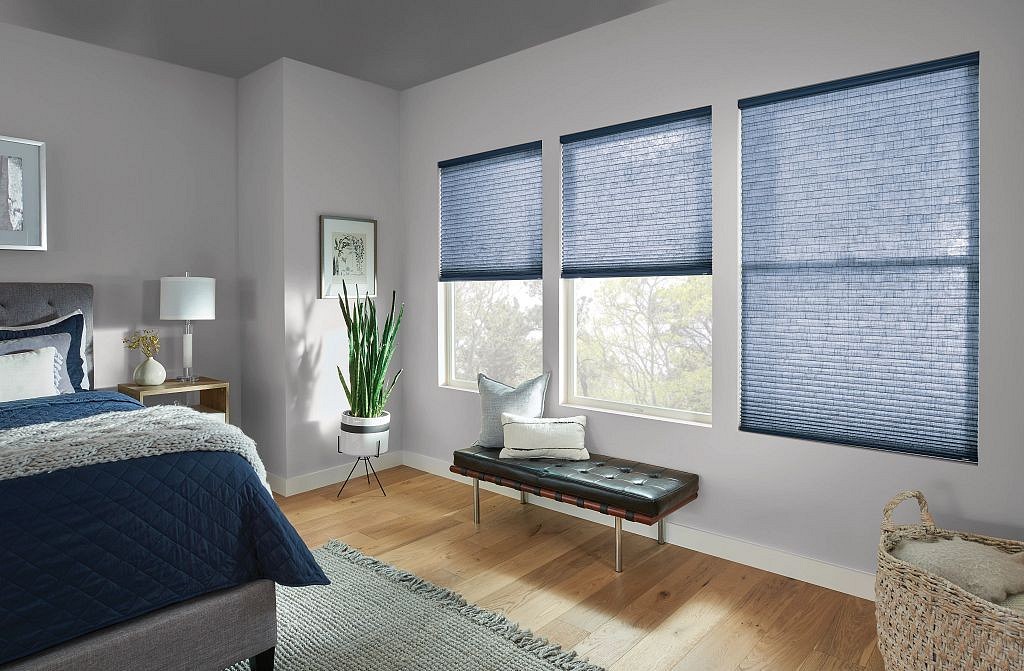
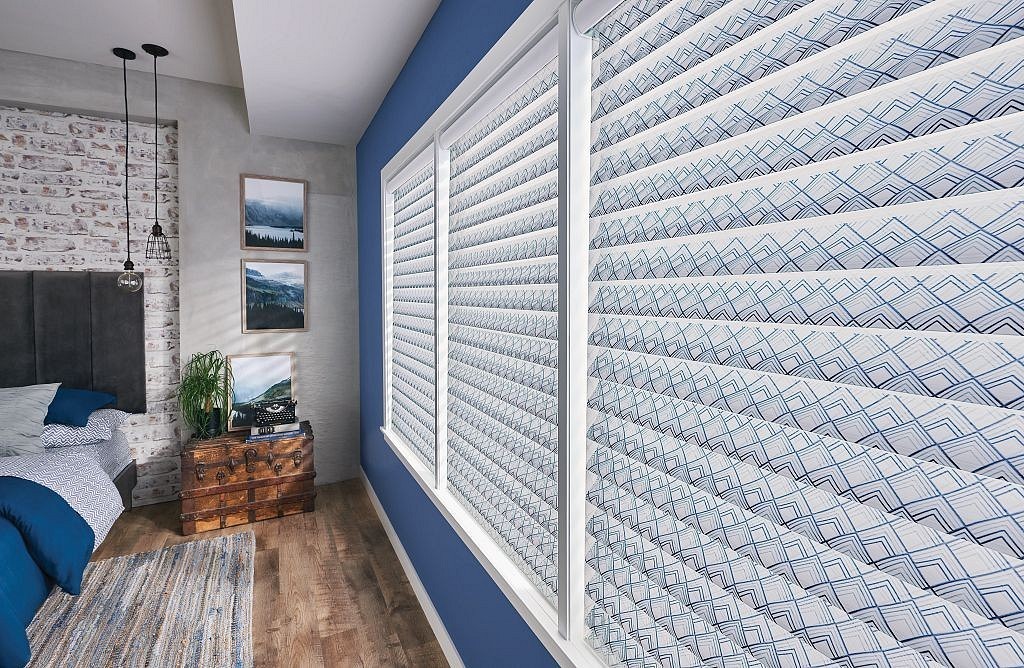
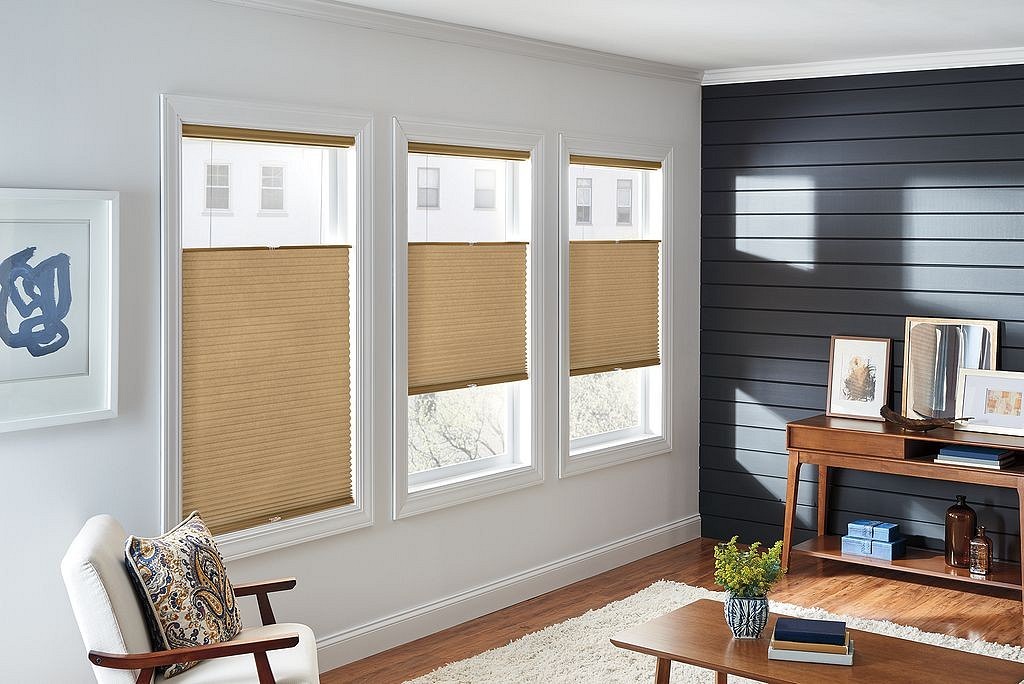
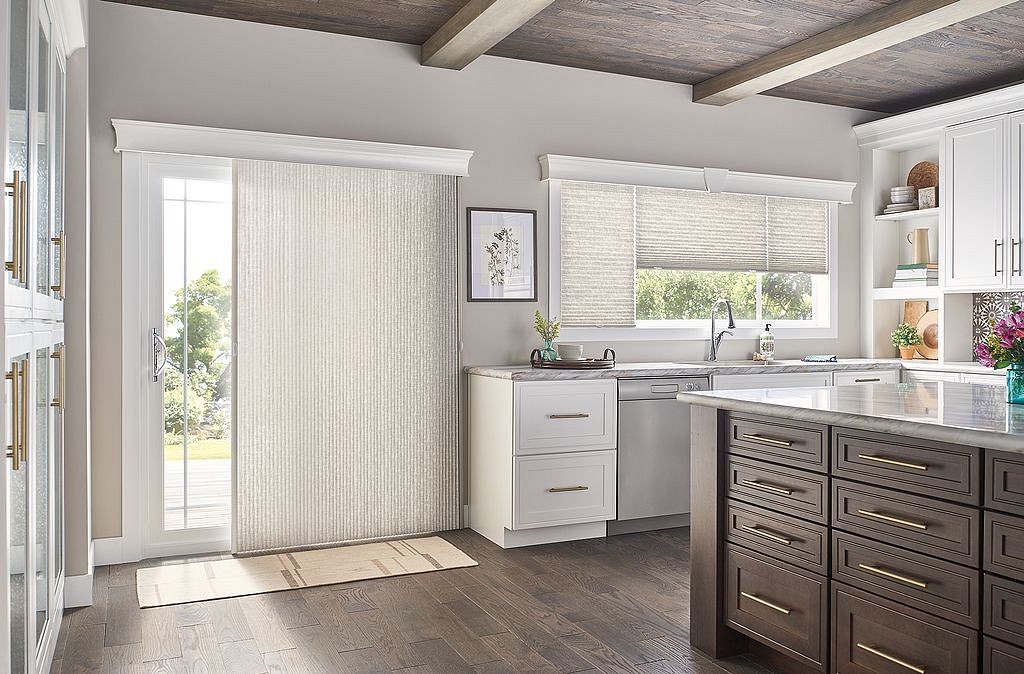
Stationary
If curtains are fixed on a curtain rod and do not move, they are called stationary. There are three main types of such draperies: imperial, “Bishop’s Sleeve,” and Italian. The latter is still seen in modern interiors, but the first two options have almost fallen out of use due to their excessive pomp (nowadays, they are almost never seen in residential houses – only in restaurants or theaters, where overt luxury is welcomed).
Italian
This variation of traditional classic curtains differs only in that they are fixed to the curtain rod, and to let light into the house, their lower parts are drawn to the sides and secured with cords, ribbons, or magnetic catches.
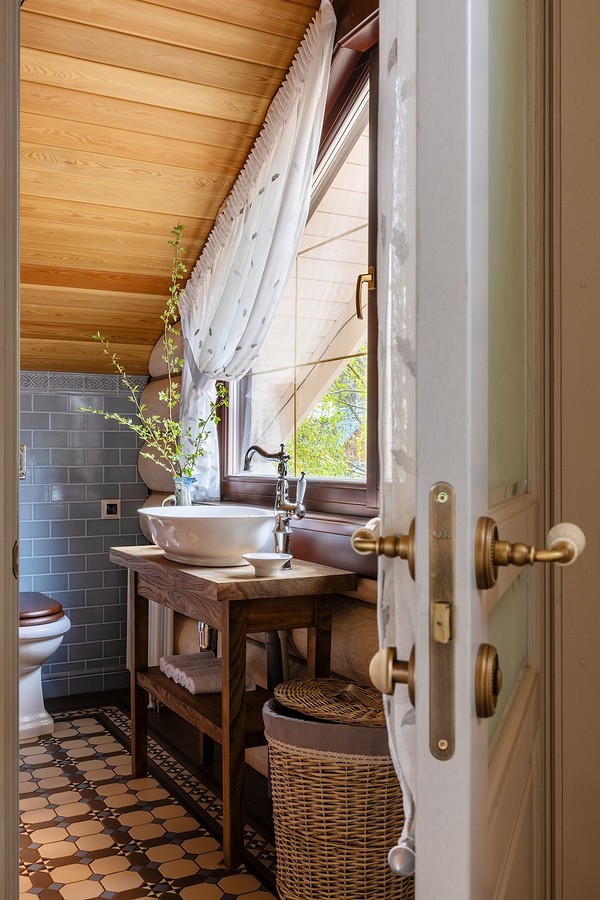
With these curtains, the window glass is always partially covered, so they are only purchased for very large windows or made from semi-transparent fabrics that minimally obstruct light. Often, decorating windows with such draperies implies opulence and layering: they are paired with straight curtains made of tulle or lace, decorated with fringe or tassels, and complemented with valances and so on. Clearly, such grandeur is only suitable for spacious living rooms, dining rooms, and sometimes bedrooms: it definitely does not suit kitchens, playrooms, or small apartments.
Imperial
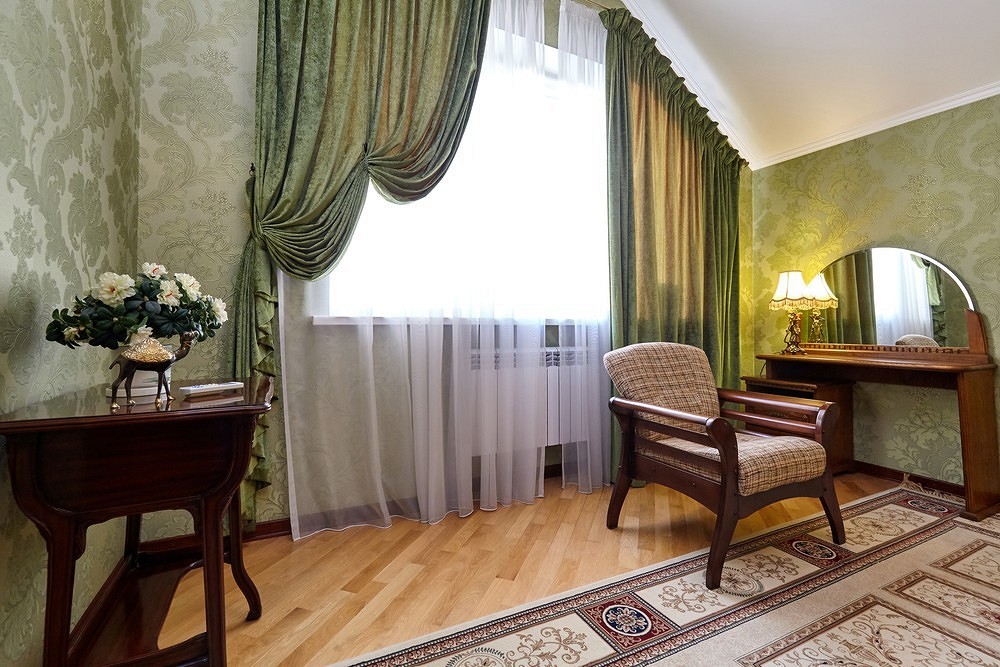
In a home with a grand setting, high ceilings, and antique furniture, you might consider these draperies.
In all other cases, they would look out of place. These are static, heavily draped curtains made from expensive fabrics like brocade, taffeta, silk, etc. Their role is purely decorative: once hung, they stay in place until replaced.
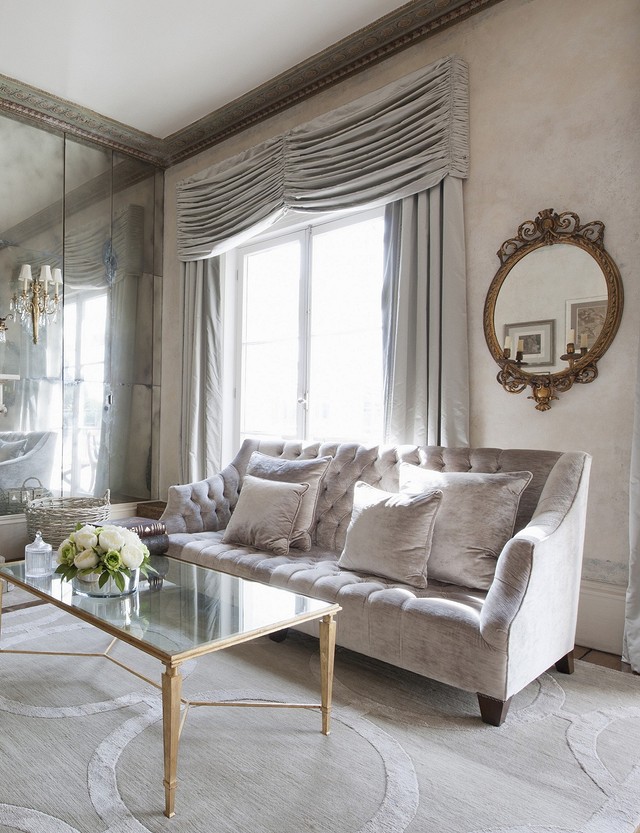
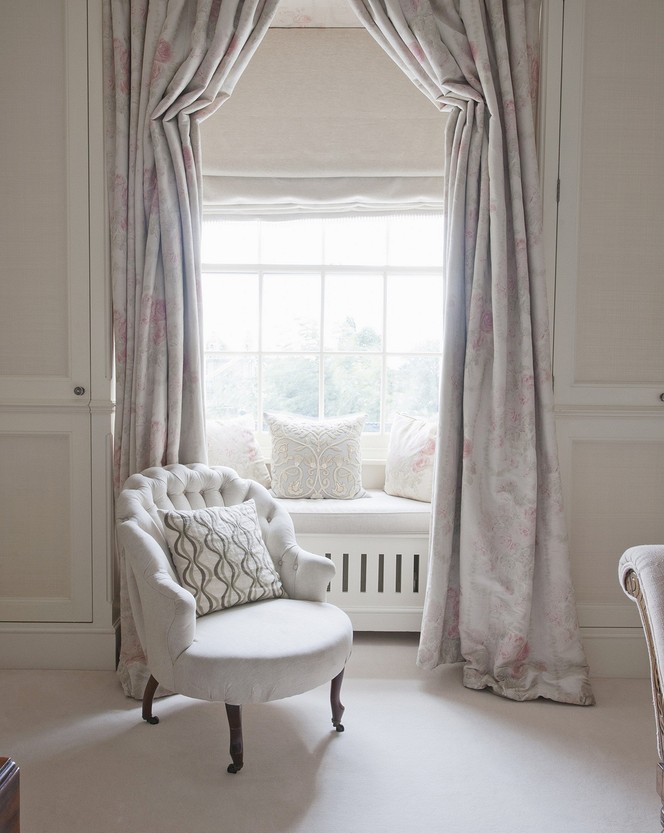
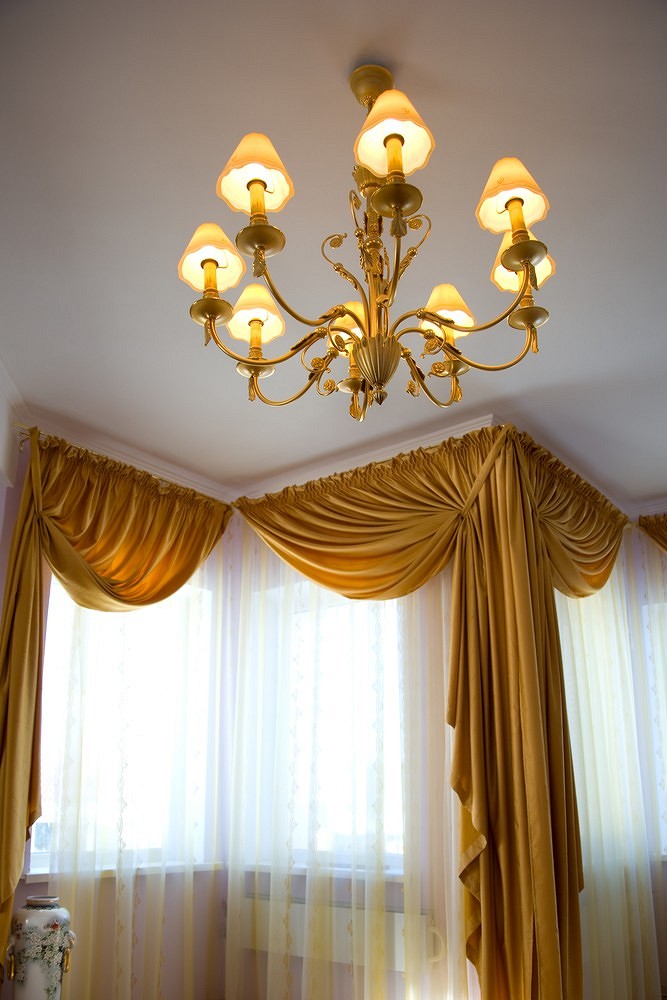
Bishop’s Sleeve
Another rare option for window dressing.

This is a subtype of the previous draperies: they are similarly immovable, only for beauty, and fit only with a deliberately luxurious, “palatial” interior. Each of these curtains consists of a vertical panel with one or more puffings. “Bishop’s Sleeve” rarely stands alone, usually complemented by imperial or Italian curtains, as well as valances.
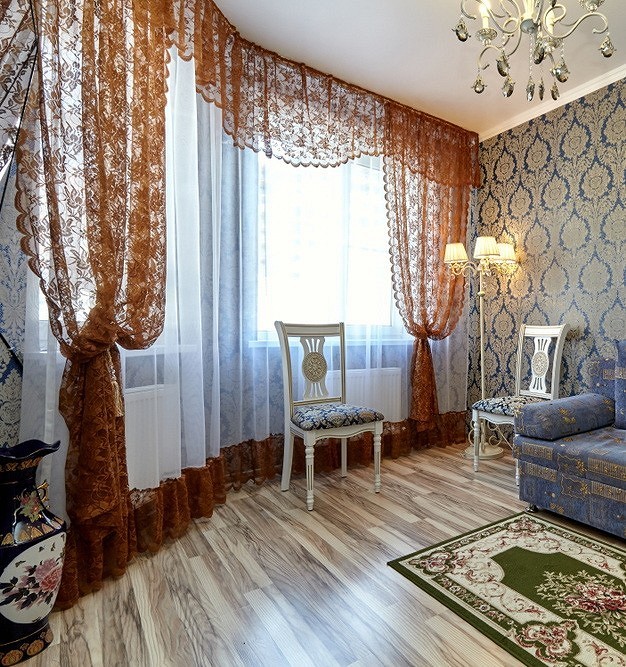
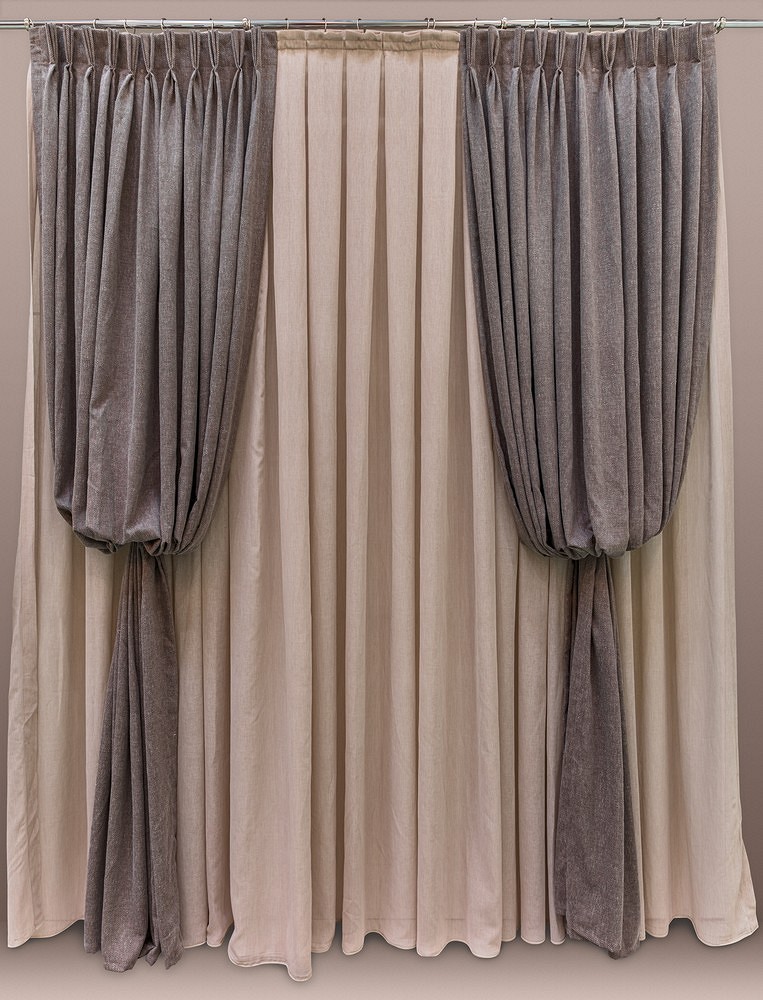
Where else can you hang curtains?
Curtains aren’t just for windows. They adorn doorways and glass doors, divide space into zones, decorate sleeping areas, and more.
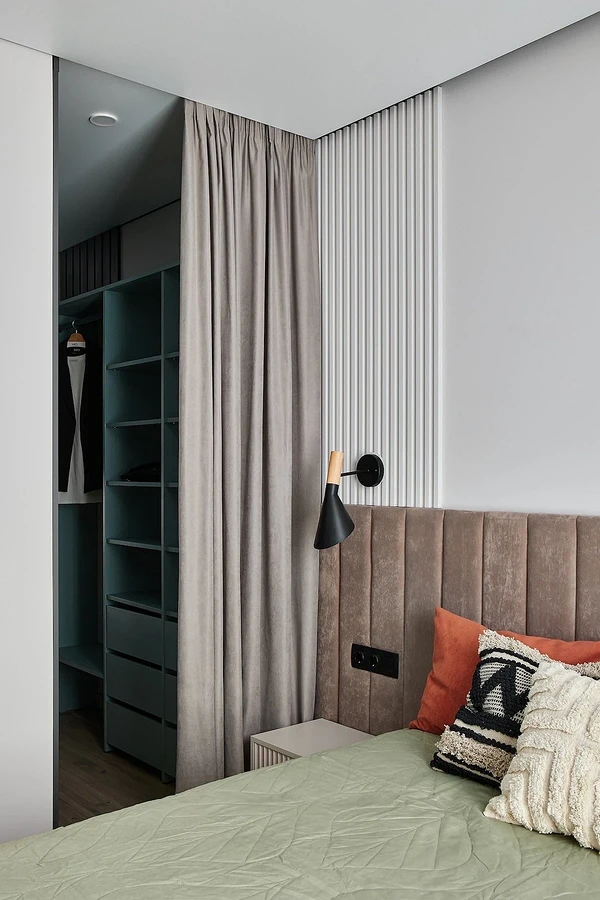
Wondering what types of curtains you can hang at a room entrance? Choose classic straight and string curtains: they won’t obstruct passage. If you have a small apartment and need more personal space, section it off with dense sound-absorbing draperies. If you have transparent doors and lack privacy behind them, order café-style curtains: there are variations specifically for such cases. Want to decorate a sleeping area? A tailor can sew you a lightweight canopy. The application of curtains is much broader than one might think—they can hang practically anywhere you desire.
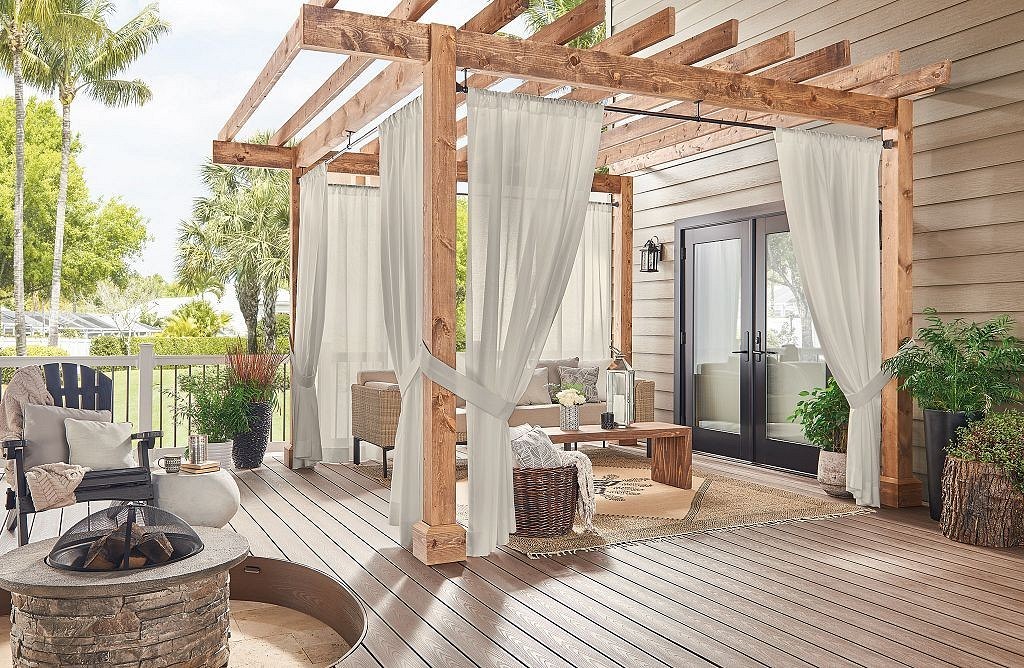
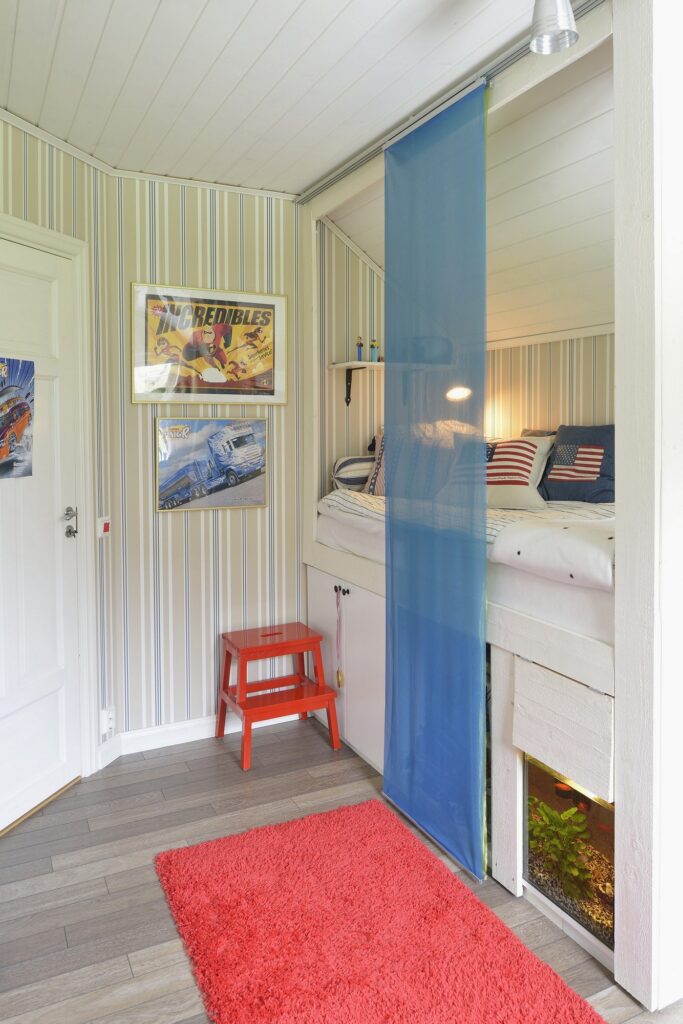
What types of window curtains are suitable for your home?
Successful curtain shopping involves considering key nuances in their selection.
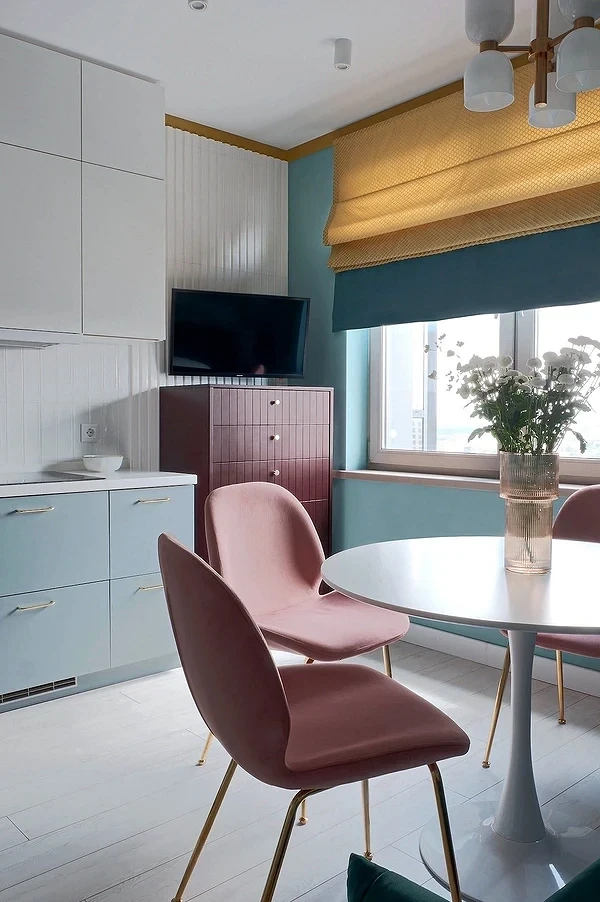
Before purchasing, make sure the model you choose meets the following criteria:
- Room size. The smaller the room, the lighter the window dressing should be. Dark draperies are only suitable in spacious halls. An exception is the bedroom, where near-black colors are needed for complete nighttime darkening.
- Room type. In the kitchen, curtains get dirty quickly and need frequent washing. The same goes for children’s rooms: kids might draw on them or test their durability. Therefore, the material there should be easy to clean and durable. In the bedroom, dense curtains that completely cover the windows and absorb sound are appropriate. In the living room, opt for more expensive models that match the rest of the interior. In the office, very simple curtains without extra details are preferable, so nothing distracts from work.
- Window shape. If they are vertically elongated, avoid vertical stripes on the panels; wide and low window openings, conversely, should not be decorated with horizontal stripes. For attic windows, a specific type of curtain, usually roller, is chosen.
- Direction of windows. In rooms with south- or west-facing windows, hang curtains in cool tones; for north and east, warm tones are suitable.
- Ceiling height. The higher the ceilings, the denser and heavier the fabric can be. With low ceilings, only light fabrics are acceptable.
- Window position. The lower the windows, the higher the curtain rod should be hung, and the longer the curtains should be.
- Floor features. If the floor is uneven, make the curtains either 3-4 cm above it or add 20-30 cm to the length so that the panels lie in beautiful drapes. If the floor is level, the curtains should end 1-2 cm from it.
You can combine all models to create unique solutions, achieving both functional and beautiful window decoration. A classic combination is dense curtains and transparent tulle. But you can go further and complement light patterned curtains with neutral roller shades that provide protection from bright sunlight. Soft straight models pair well with both opaque Roman shades and draped curtains. A muslin curtain can easily replace a transparent organza.
Choose curtain shades according to the room’s color scheme. There are various ways to harmoniously integrate them into the interior: for example, they can be in general tones with the finishing or furniture, echo with home textiles or carpets, or be matched to the tone of decorative accessories, paintings, and other art objects decorating the room.
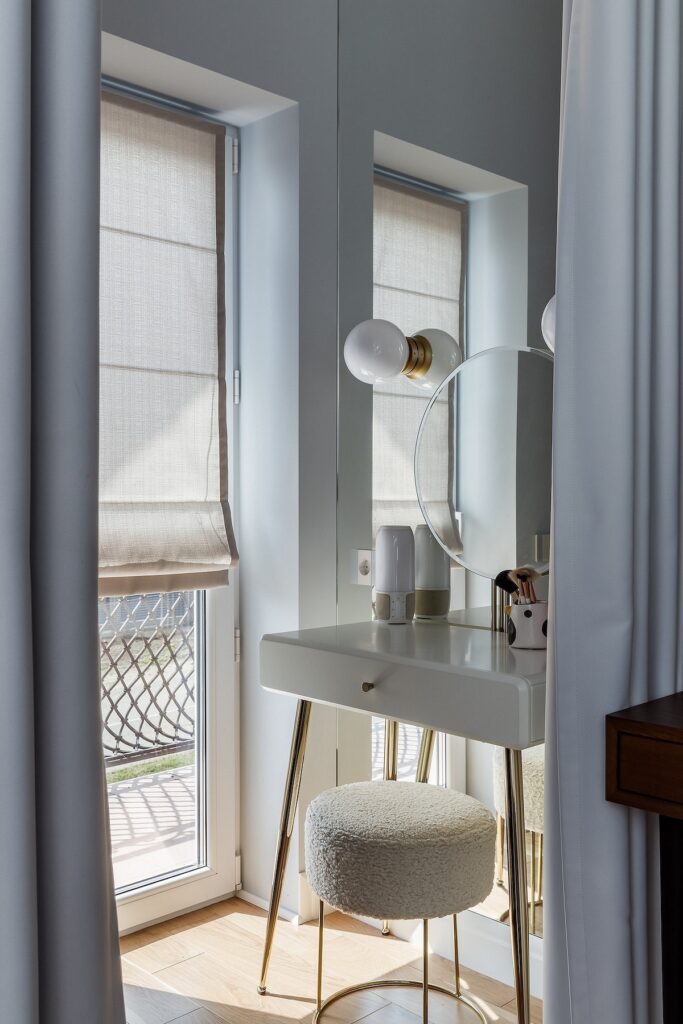

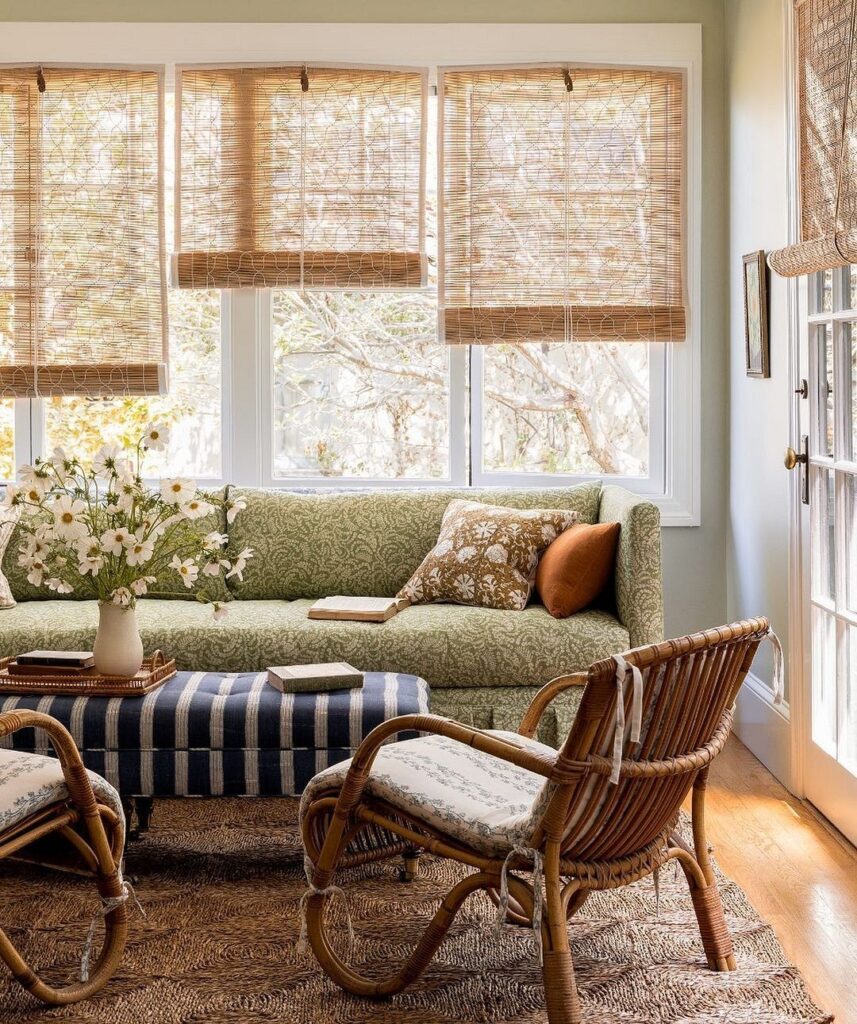
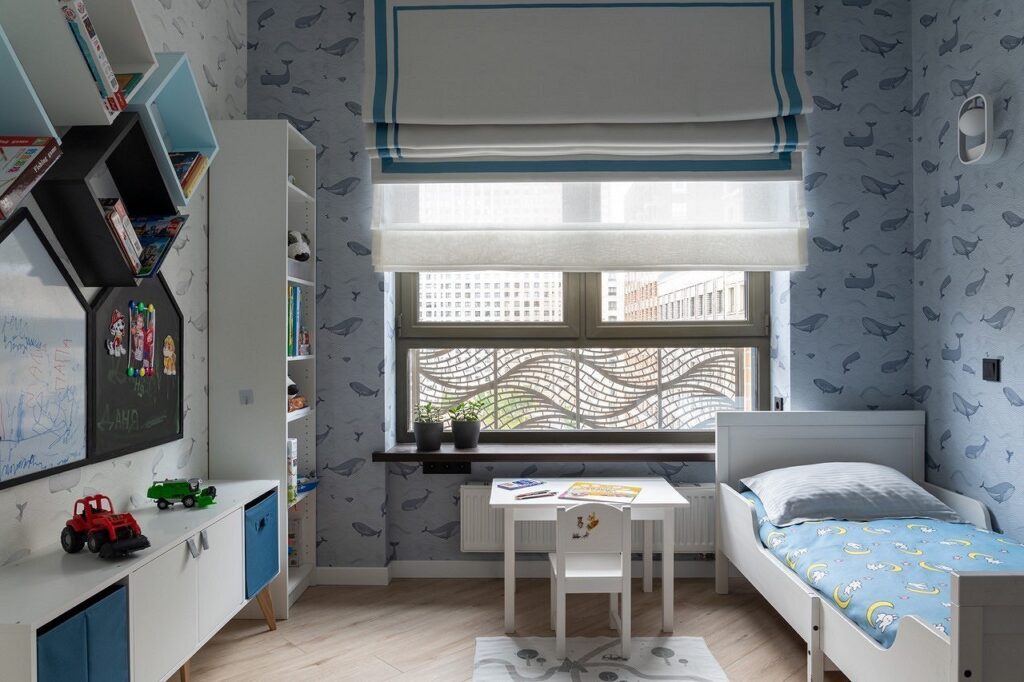
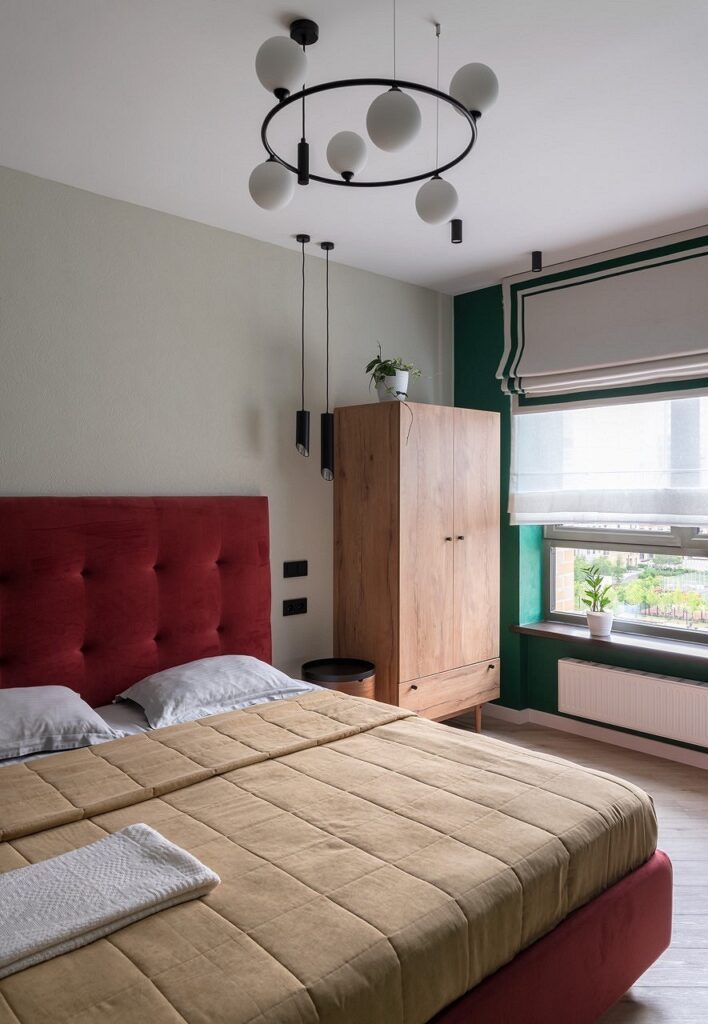
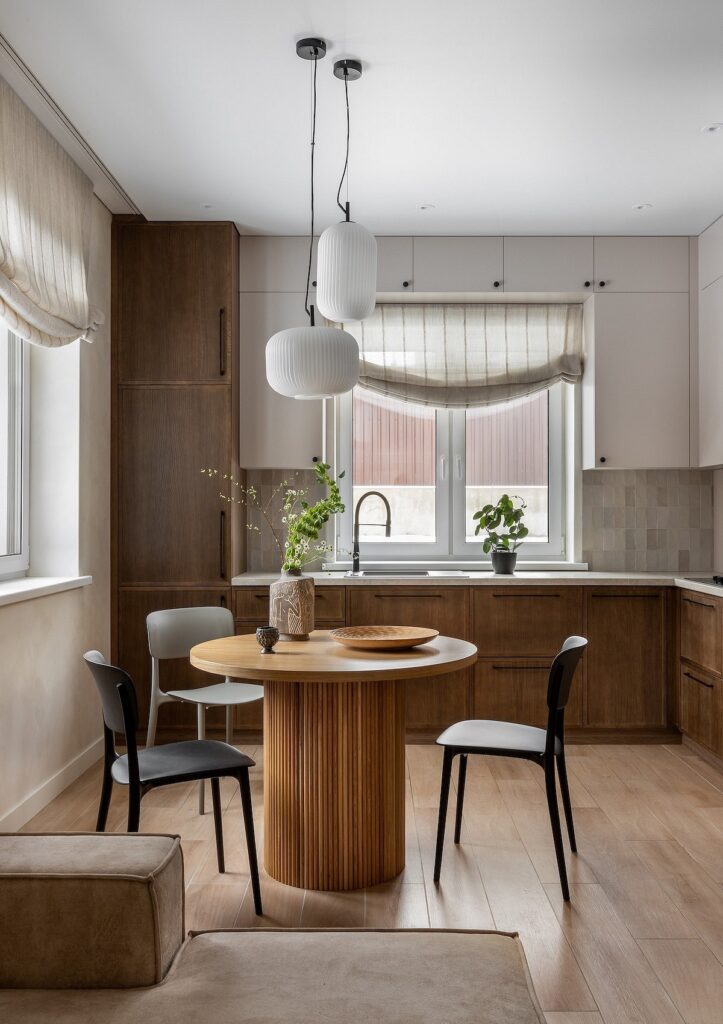
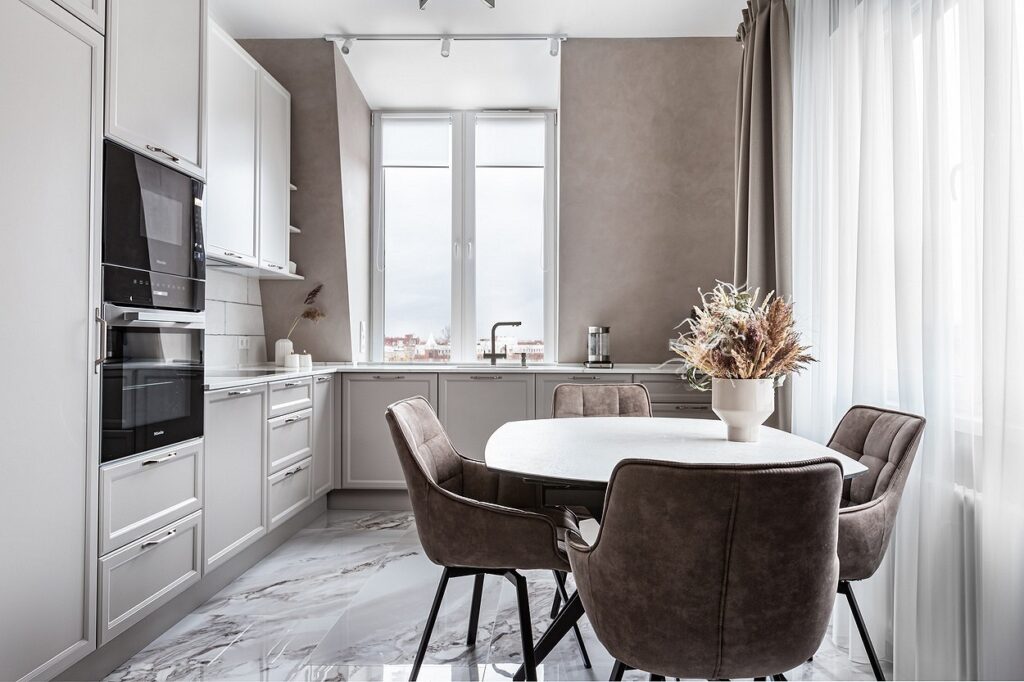
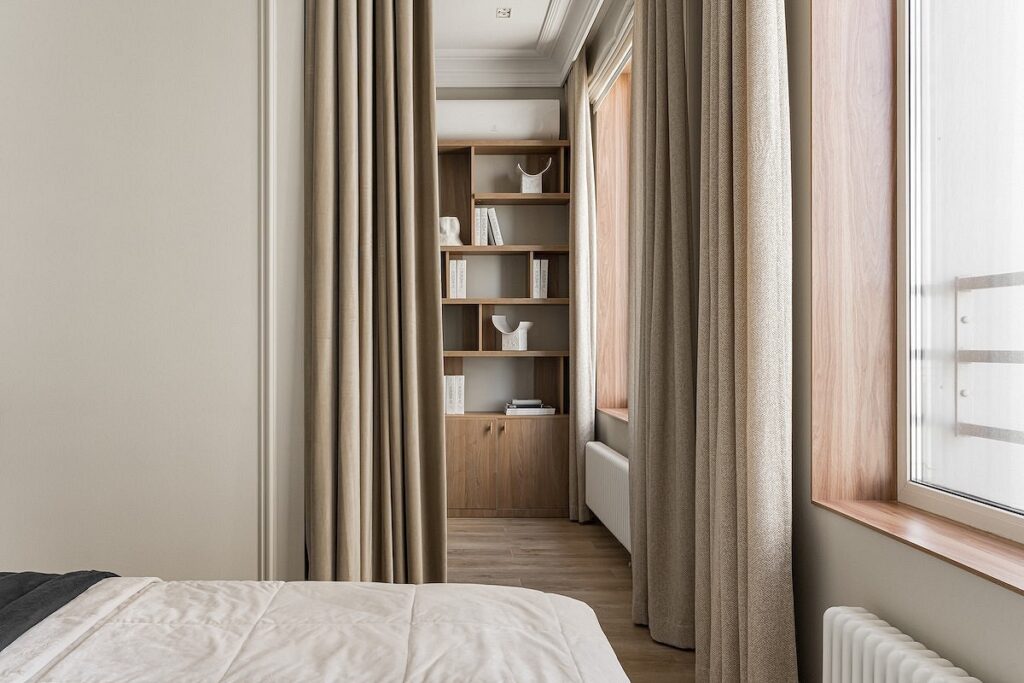
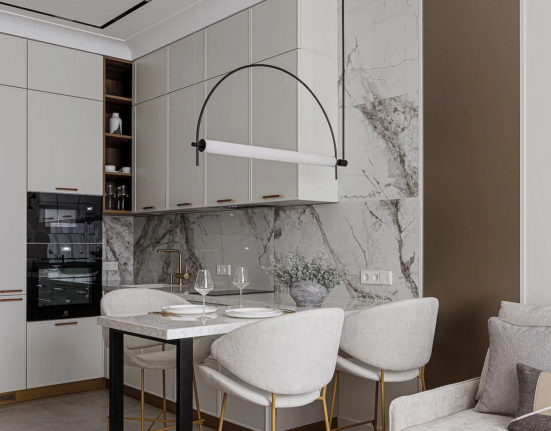
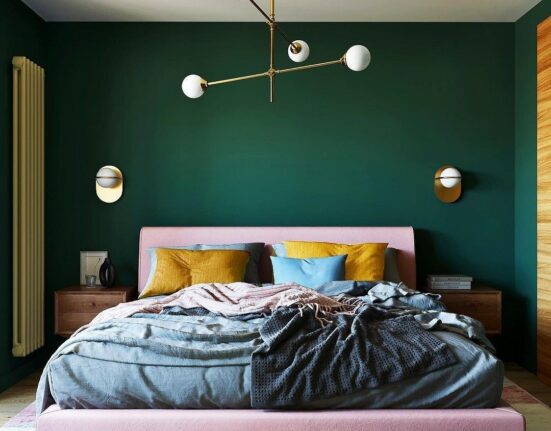
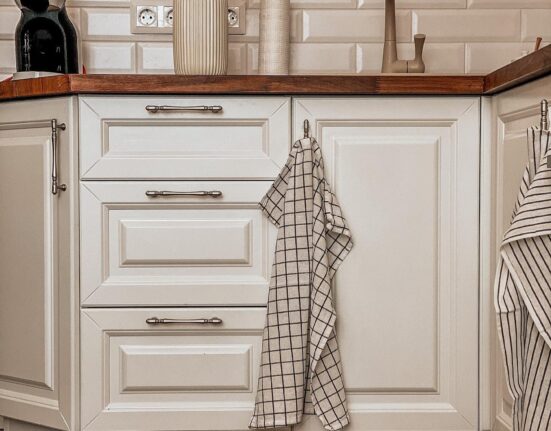
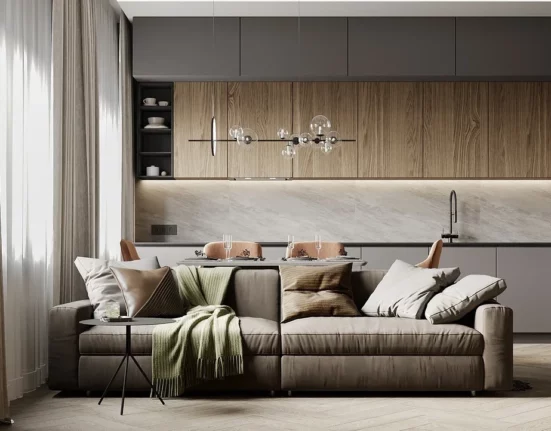
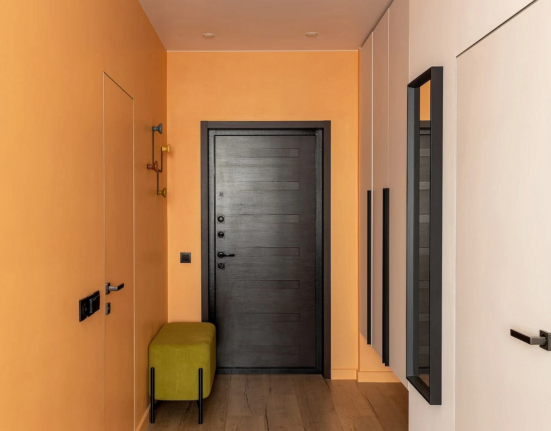

Leave feedback about this